Building a thriving ecommerce store demands hard work and dedication. Way before you set it up, you need to establish a solid foundation.
In this comprehensive guide, we’ve put together seven steps to help you build, launch, and market your ecommerce store. Along with actionable tips to see you succeed.
Here’s how to start an ecommerce business successfully.
1. Identify Your Niche and Products to Sell
To start an ecommerce business, you must first identify your niche.
Doing so allows you to be laser-focused on a specific market segment. Helping you spend more time and effort on understanding the needs of that particular group.
To identify the best niche(s) for your business, ask yourself questions like:
- What niche(s) do I hold expertise in? It’s a good idea to operate in a niche where you already have knowledge or experience. You’ll probably already understand the target market and be familiar with the demand for different types of products.
- What are some of the most profitable niches right now? We recommend choosing a niche with less competition, high demand, and impressive growth potential. Check out some popular niches.
- What are my personal interests or hobbies? Pick a niche that aligns with your interests or hobbies—it can get you even more invested in your business
- What are my initial budget and resources at hand? Determine whether you can afford to handle production. Or if you should consider dropshipping or partnering with manufacturers. In either case, work out if you can afford to maintain a steady supply of products and manage related costs.
Determining your preferred ecommerce business model can also help you hone in on a niche and formulate product ideas.
There are six major ecommerce business models to consider:
- Business-to-consumer (B2C)
- Business-to-business (B2B)
- Business-to-government (B2G)
- Consumer-to-consumer (C2C)
- Consumer-to-business (C2B)
- Consumer-to-government (C2G)
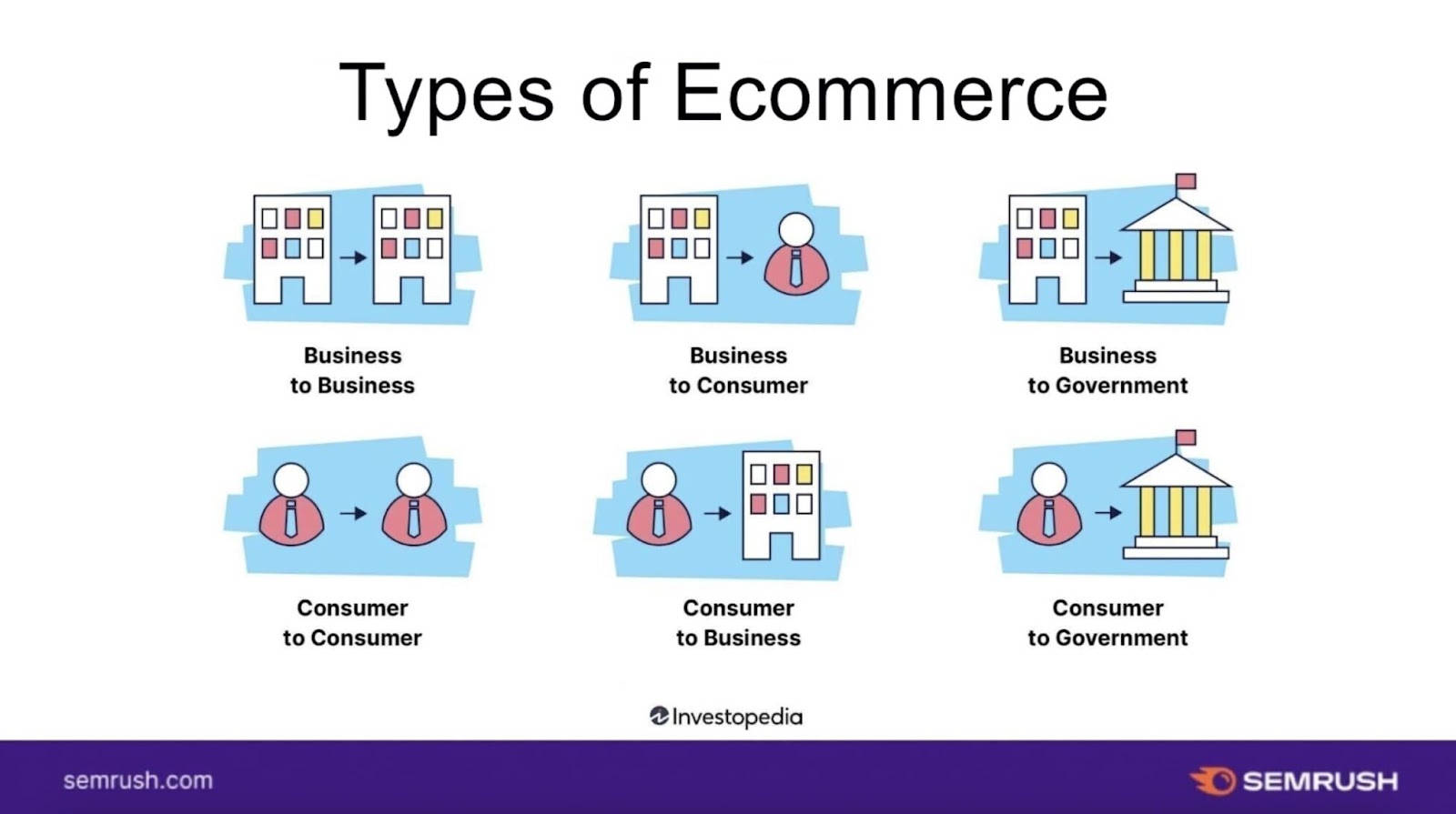
Let’s say you want to run an ecommerce business that sells to businesses (B2B). Industrial machinery and equipment could be a good niche to target. You can narrow things down to sub-niches based on your preference and expertise—like woodworking machinery, textile machinery, construction equipment, etc.
Once you’ve identified a couple of niches, evaluate their demand and competition by:
- Analyzing research reports from credible sources to understand their growth potential
- Interviewing industry leaders in these niches to better understand the market dynamics, customer preferences, trends, challenges, and growth potential
- Conducting competitive research. Identify the top players to learn what products they sell, how they influence customers’ purchasing decisions, what marketing channels they are on, etc. More on this in the next section.
Semrush’s Market Explorer is a handy tool for obtaining valuable market research data. Including market traffic, market size, traffic cost, key players, and top keywords.
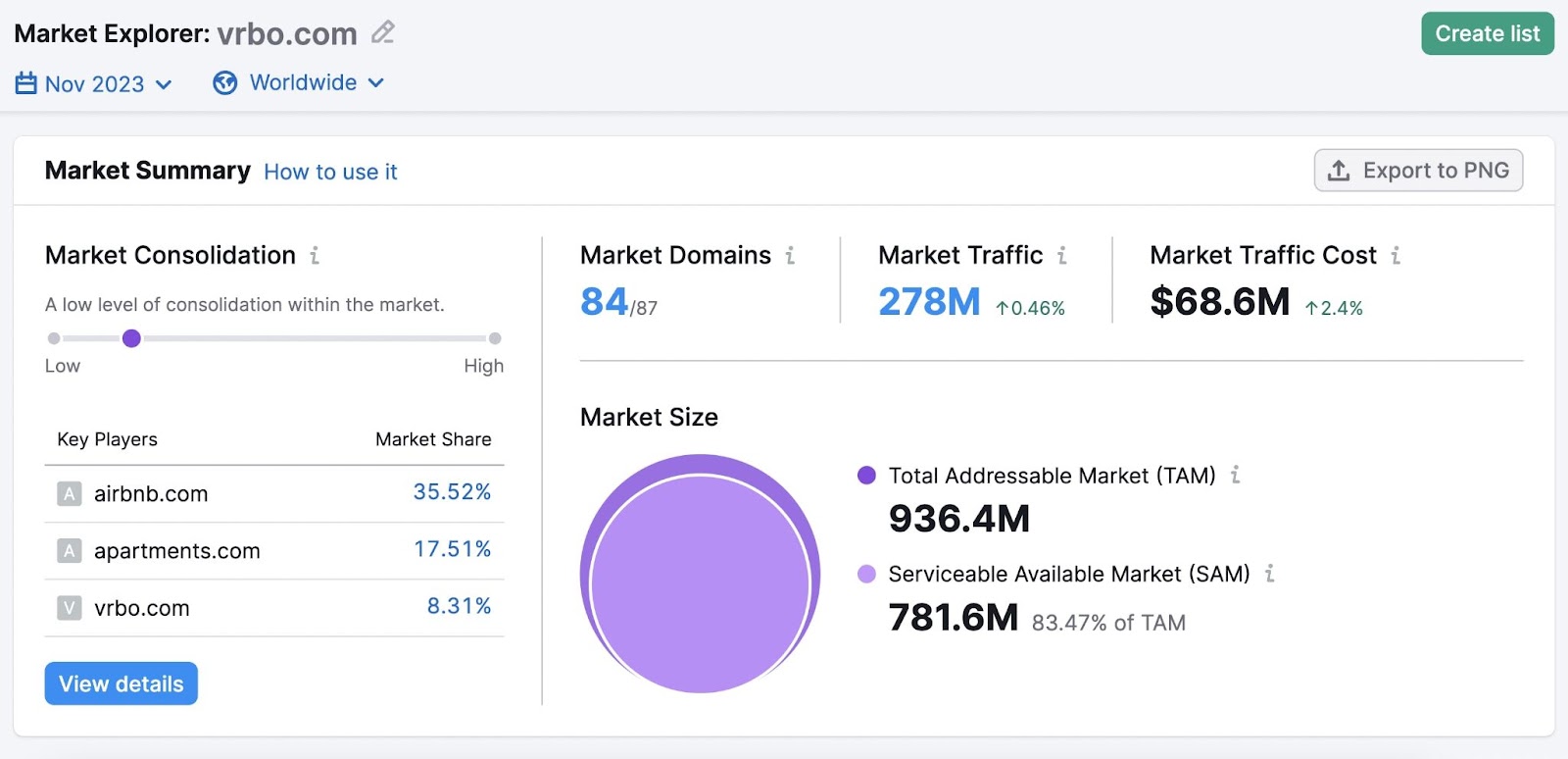
Conducting this research can further identify the top challenges faced by customers.
Next, it’s a good idea to narrow down your ecommerce niche(s).
Suppose you want to operate in the skin care niche. At this point, it’s important to note that the skin care industry is an oversaturated market.
To make your ecommerce business a success, you’ll need to identify a unique product category within the skin care industry. Here’s how:
- Start by identifying a broad market—skin care in this case
- Identify a less saturated segment: Within your chosen industry, identify a segment that has fewer competitors and high demand. Say, natural or organic skin care products.
- If the sub-niche is still broad, narrow your focus onto a specific sub-category. Like “organic skin care products for sensitive skin.”
Once you’ve identified your sub-niche, proceed to brainstorm and evaluate product ideas to really comprehend market demand.
Semrush’s Keyword Overview tool can help you do this.
For example, a good product idea in the “organic skin care products for sensitive skin” sub-niche is “natural deodorant.”
Let’s use Keyword Overview to gain insights into market demand and competition.
Launch the tool, enter the keyword “natural deodorant,” and select your business’s country.
Click “Search.”
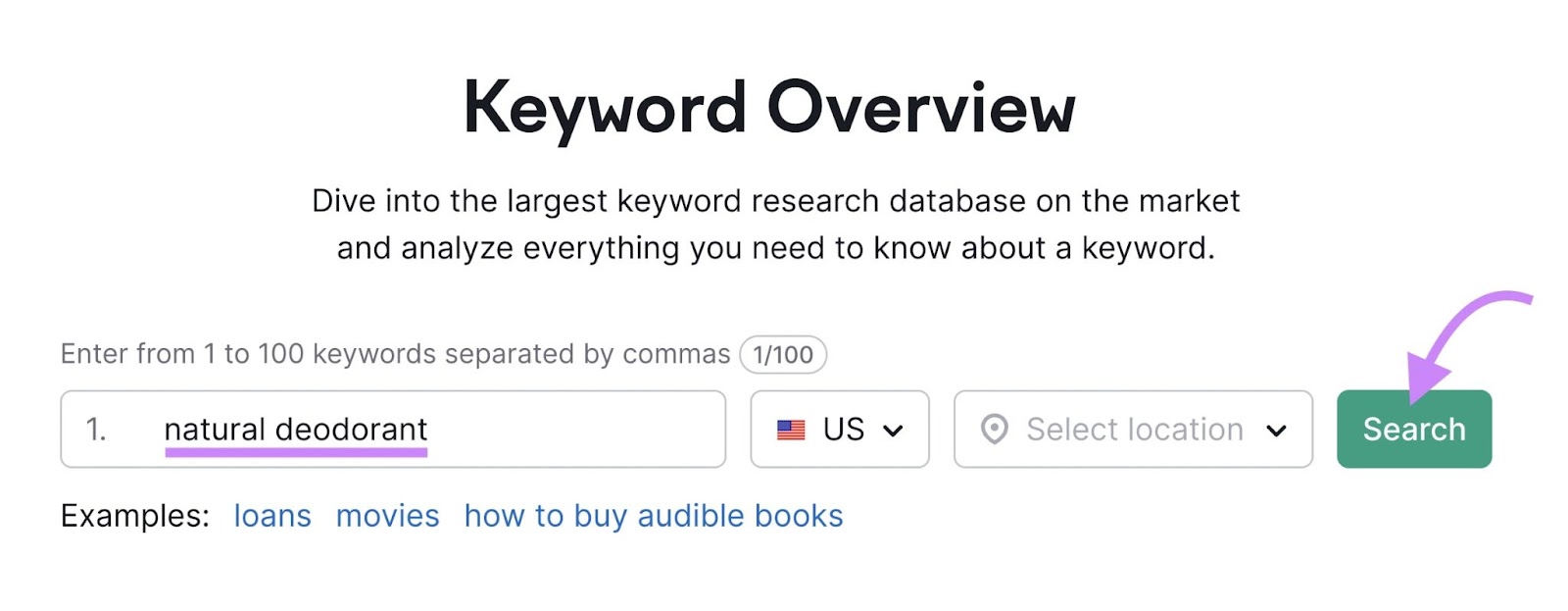
Next, you’ll see a variety of metrics related to the keyword.
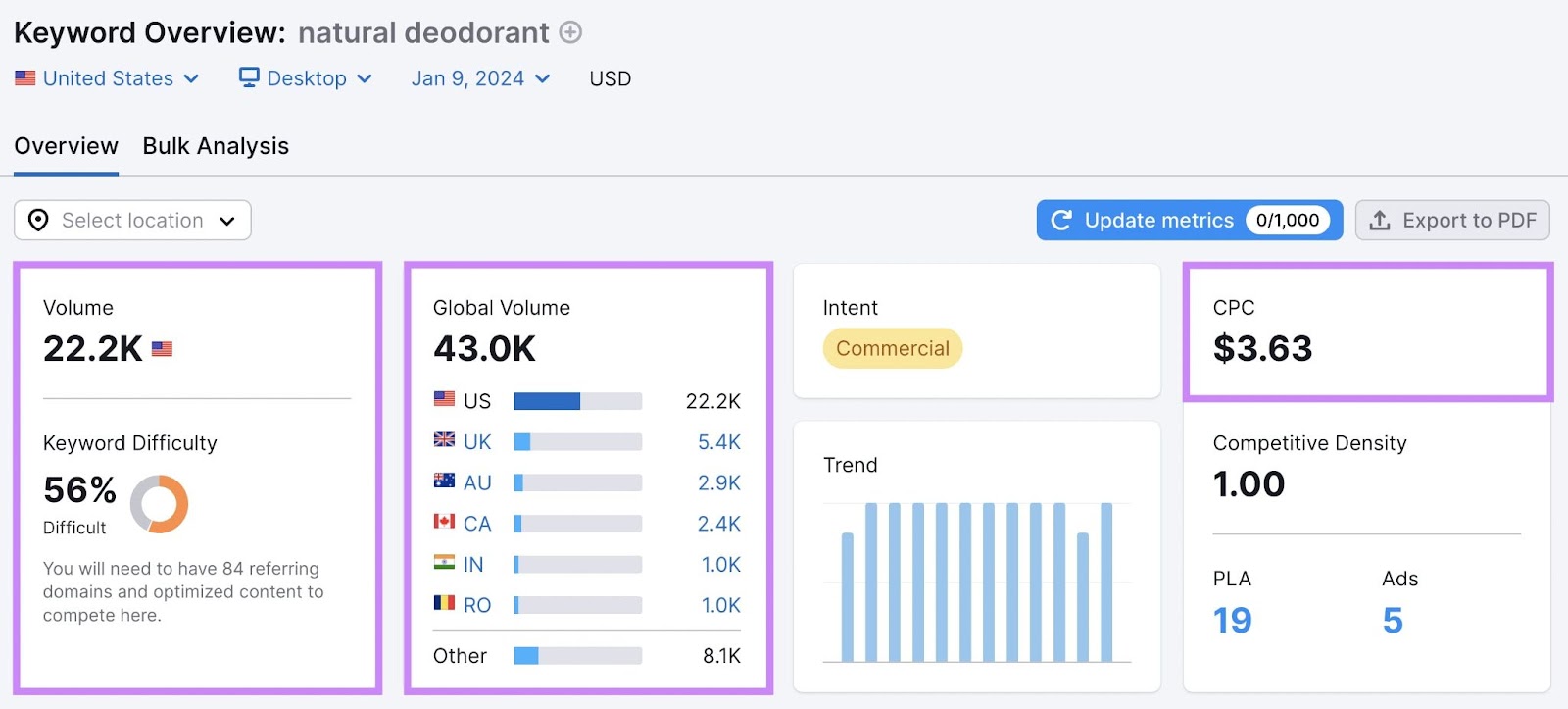
“Volume” indicates how many people look up “natural deodorant” on search engines in your selected location every month. “Global volume” measures how many monthly searches occur worldwide for this keyword.
“Keyword Difficulty” shows how difficult it is to rank in the top 10 organic search results for your target keyword. At 56%, “natural deodorant” falls in the “Difficult” category.
Another interesting metric to look at is CPC (cost per click). It calculates an estimate of how much an advertiser pays each time someone clicks their keyword-targeting paid (PPC) ad on search engines.
Use Keyword Overview to conduct research for all product ideas you’re considering.
2. Conduct Target Audience and Competitive Research
Once you’ve finalized a niche and a list of products, don’t jump straight into building your ecommerce store.
Take time to get the full picture of your target audience and competitors—which will help you base your offering around any unmet needs.
Research Your Target Audience
A target audience is a group of people you want to aim your products, services, and/or marketing efforts at. It’s usually defined by traits like gender, age, interests, challenges, and goals.
Researching your target audience can give you insights into its challenges, pain points, and purchasing patterns. So you can then create messaging, offers, and marketing and advertising campaigns that resonate with your intended customer base.
Semrush’s One2Target lets you gather your target audience’s socioeconomic, demographic, and behavioral data based on competitors in your niche.
Enter up to five domains and click “Search” to obtain key audience data.
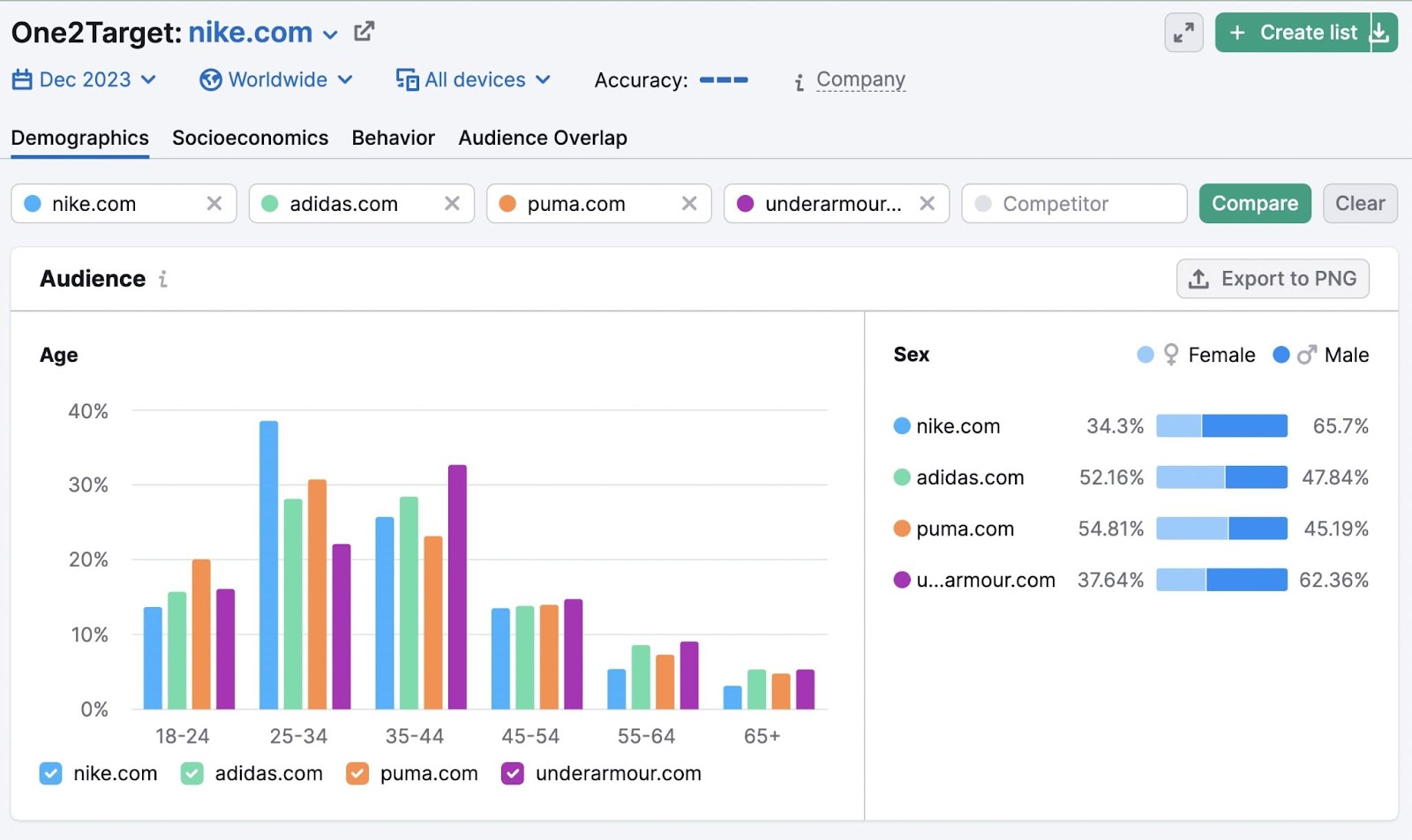
You can then create effective product descriptions, marketing materials, and campaigns based on the findings.
Research Your Competitors
Draw inspiration from your competitors’ efforts and improve on what they’re doing right. Identify their best-selling products, social media channels they’re on, and the kind of content they create that their audience likes to consume.
Semrush offers a wide range of competitive research tools that highlight your competitors’ strengths and weaknesses. Which can help you come up with more product ideas in your niche.
Organic Research uncovers your competitors’ most successful keywords, estimated organic website traffic, traffic cost, and top-performing webpages.
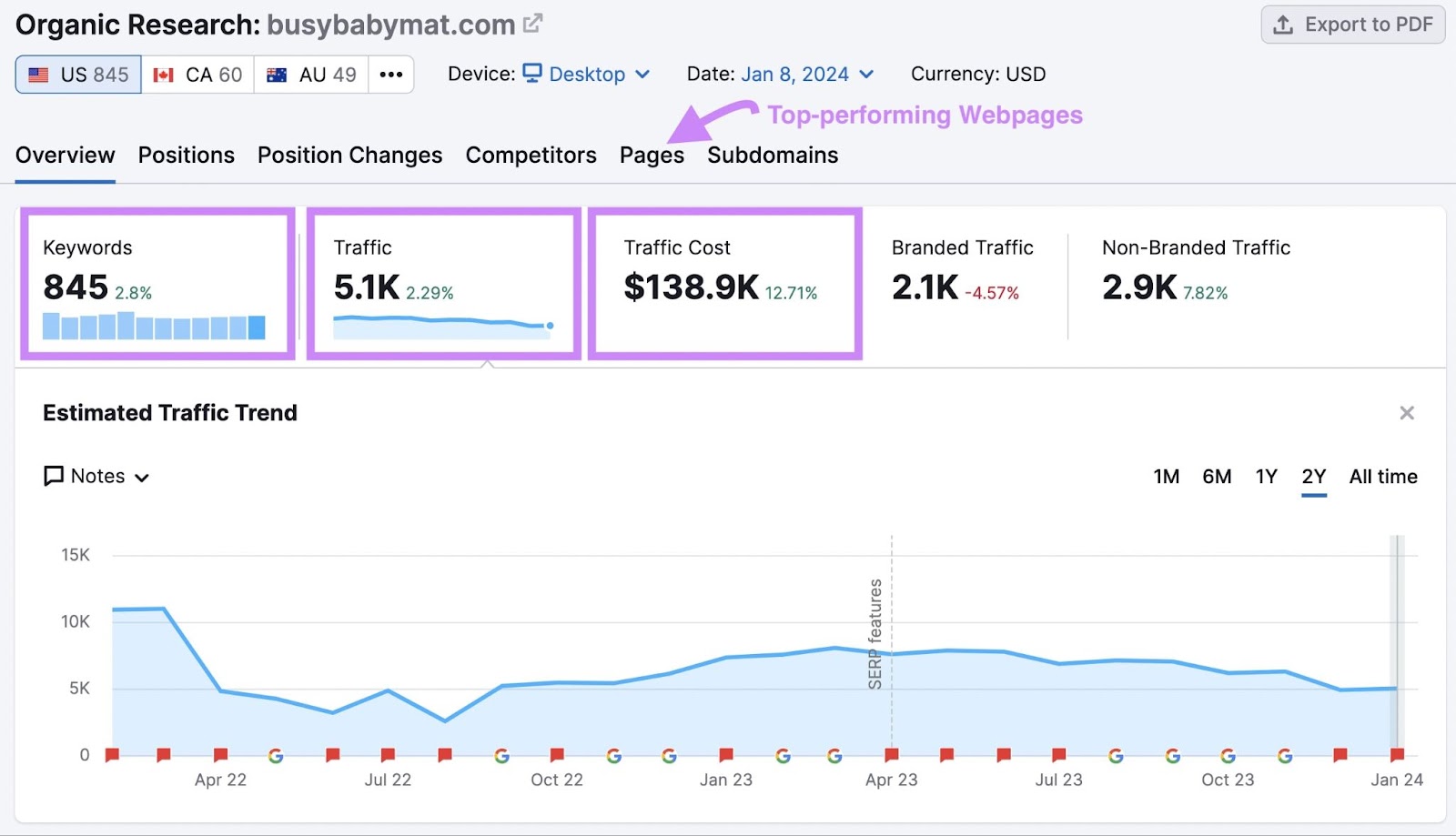
Advertising Research analyzes your competitors’ PPC ad copy and history. Along with their top paid search keywords, positions, and traffic.
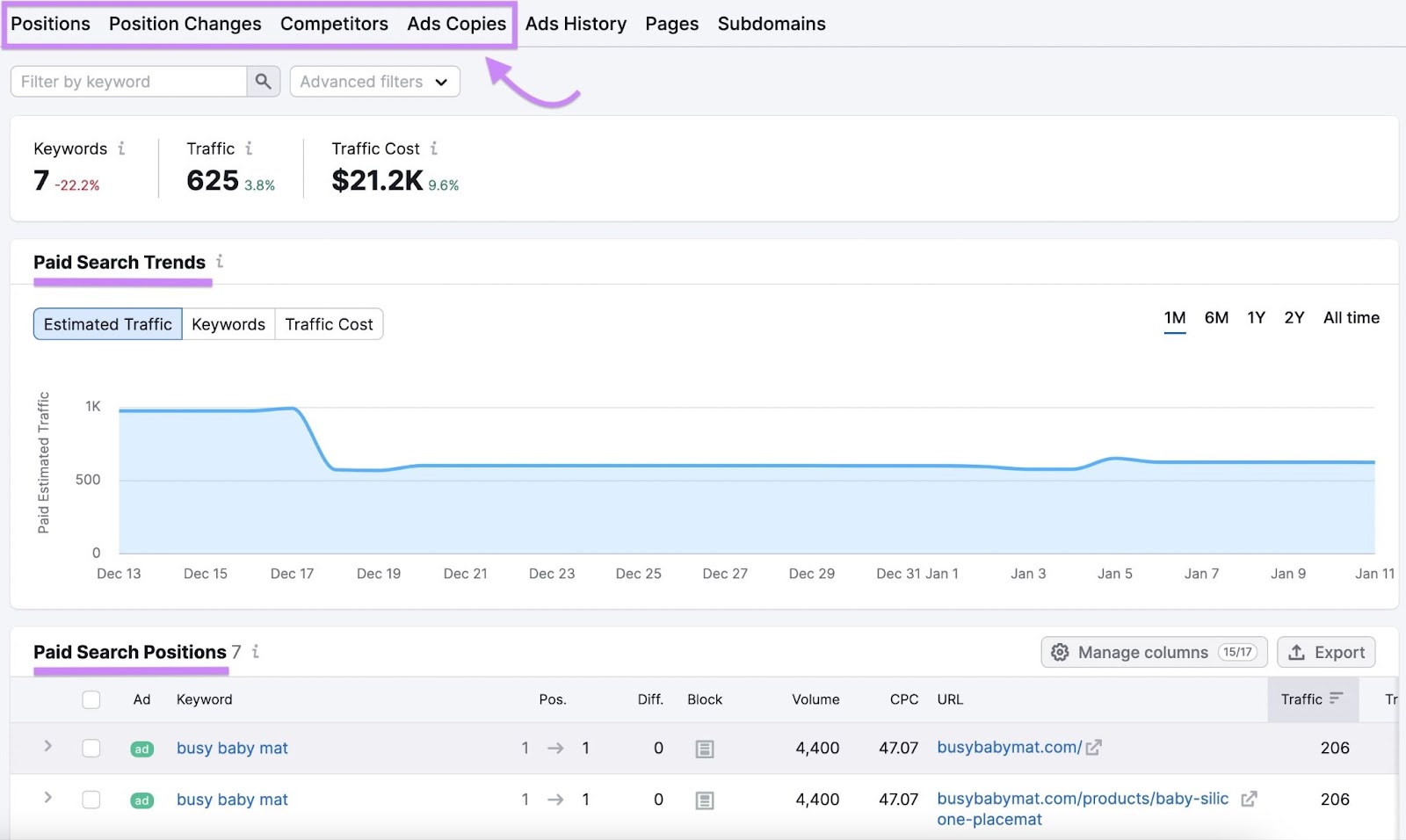
3. Validate Your Niche and Product Ideas
The next step is to confirm both your market choice and product ideas.
To validate your niche, ask questions like:
- Is there a consistent demand for products in this niche?
- What is the potential customer base size?
- How price-sensitive are consumers in this market?
- How does this niche perform during different economic cycles?
- What are the barriers to entry and the level of competition in this niche?
- Is the niche sustainable and scalable? Any potential threats in the near future?
To validate product ideas, ask:
- What does demand for these products look like?
- Can I offer a competitive price for my product(s) while maintaining a healthy profit margin?
- How scalable is the product idea in terms of production and market expansion?
- What would be the potential limitations or challenges in sourcing, manufacturing, or distributing these products?
- Are there any legal or regulatory considerations I’ll need to deal with?
- How will my products adapt to changing market conditions or consumer preferences?
Answering these questions can help you decide whether it makes sense to proceed with your selected niche and product ideas. Or if you should explore other options.
4. Source Your Product
There are several approaches you can take to sourcing your products.
- Manufacture your own products: Gives you complete control over quality with significant investment of your time, money, and resources
- Wholesaling: Purchasing products in bulk from a wholesaler—requires upfront investment and storage space
- Dropshipping: Partner up with a supplier who handles the manufacturing, storage, packaging, and shipping. So you can focus on marketing and driving sales.
- Partnering with local manufacturers: Work directly with local manufacturers who will manufacture products based on your needs and specifications
Your approach will decide your next steps.
For instance, if you choose to manufacture your own product, you’ll need to work on product design, development, and manufacturing. Along with purchasing equipment, hiring people, renting a manufacturing space, and so on.
If you partner with local manufacturers, you’ll need to evaluate different contenders, compare pricing and product quality, negotiate terms, and discuss your specific requirements.
5. Write a Business Plan
Your ecommerce business plan should outline your company’s goals, the strategies to achieve these goals, plus your target market, financial projections, and operational structure.
This document should act as a reference point and a roadmap for your business. And answer some important business-focused questions.
Here’s a template you can use to draft a well-written business plan:
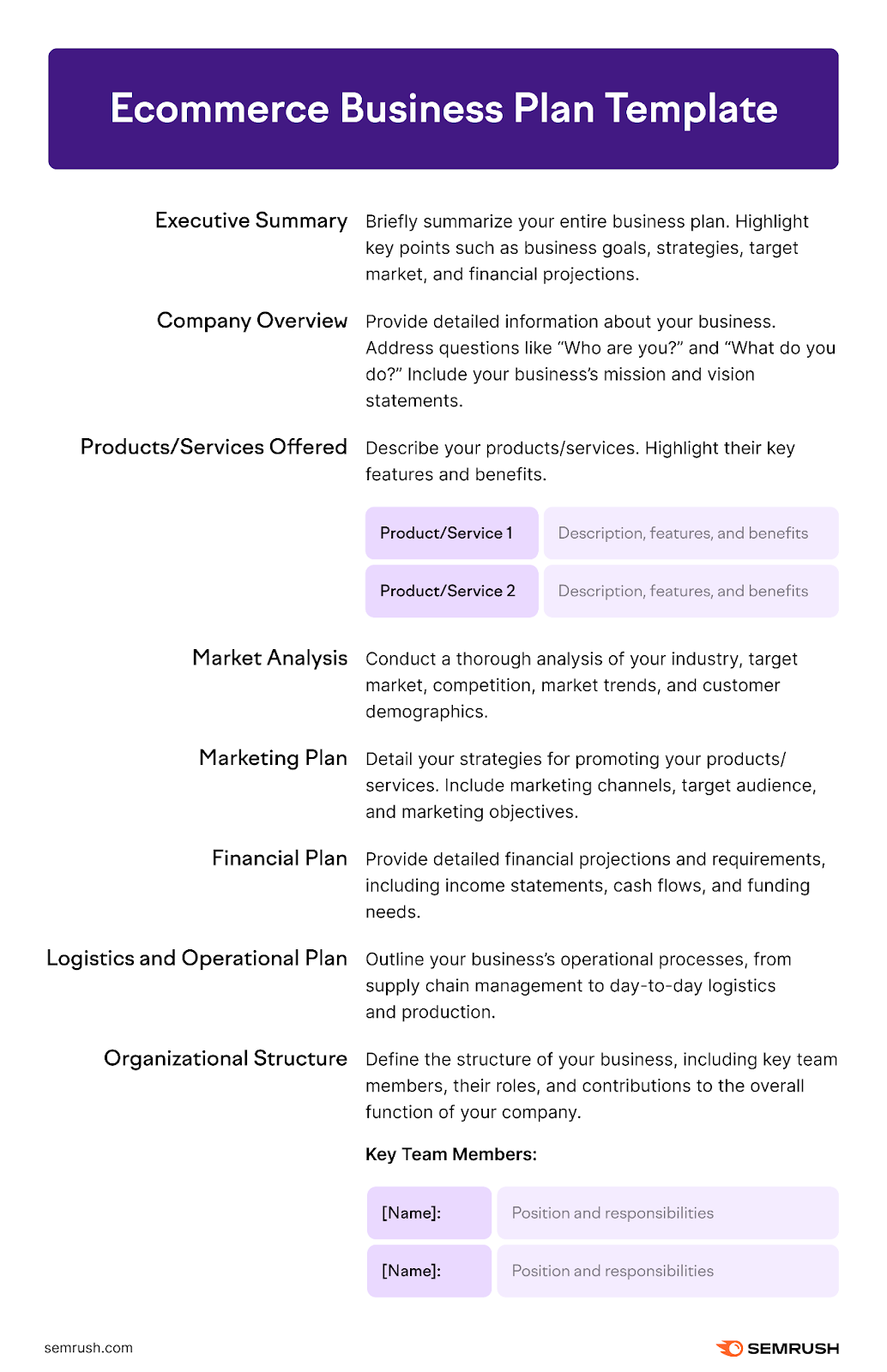
Now is the right time to pick a business name and deal with any legal requirements associated with establishing your online store.
You’ll also need to apply for the necessary trade licenses and sales tax certifications. Plus health, environmental, and safety permits.
6. Build Your Ecommerce Store
To create your ecommerce store, you can either work with an ecommerce website developer or do it yourself. Here’s how to DIY:
Find the Right Domain Name
A domain name is a part of your site URL that identifies what your business is. Like this:
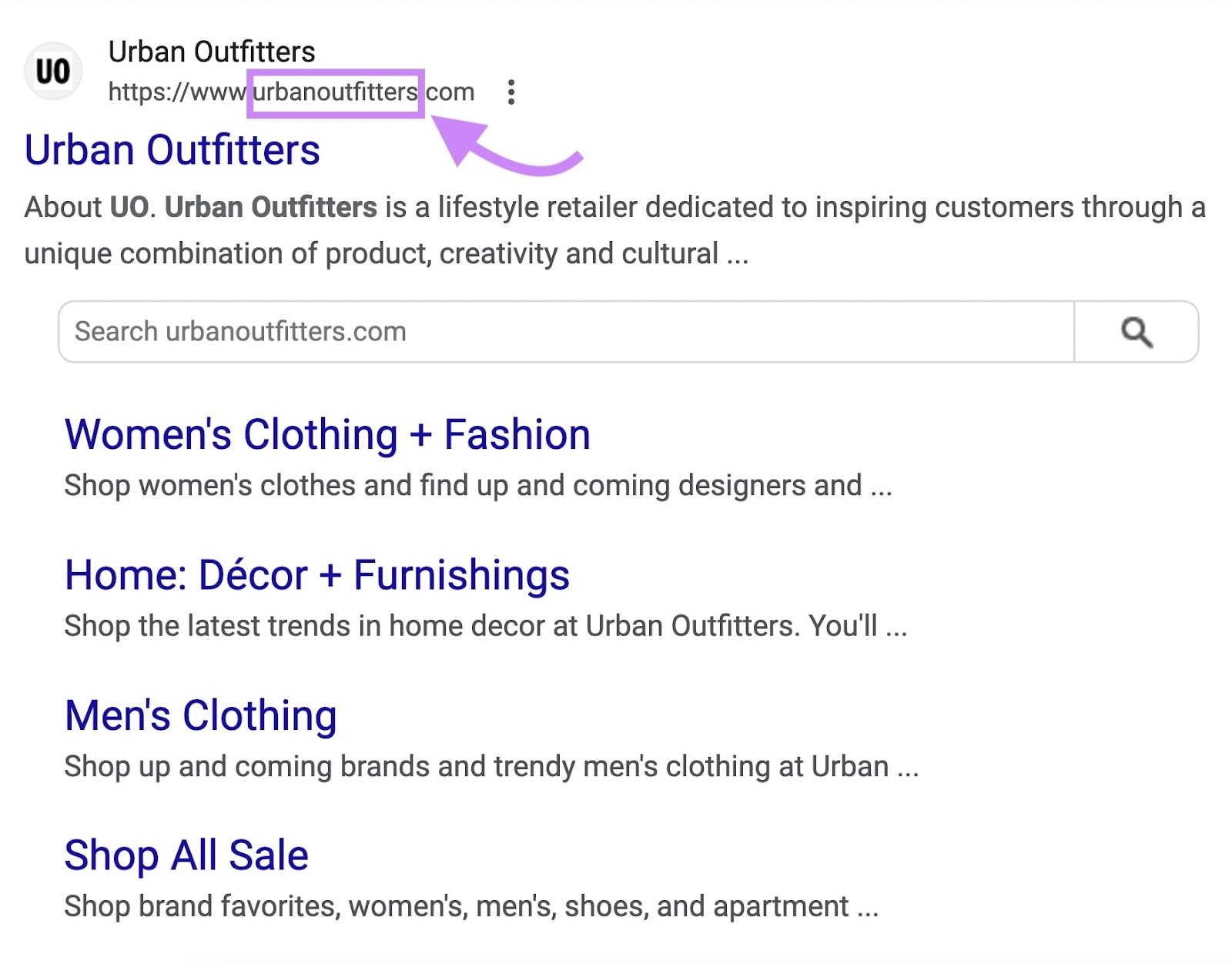
While it’s good practice to feature your business name as your domain name, it’s not mandatory.
You can check domain name availability in a domain name registrar like GoDaddy. Or a domain name search service like Instant Domain Search.
Choose a Website Builder and Web Host
An ecommerce website builder is an online platform that allows you to create and manage your online store without the need for extensive technical knowledge.
Many website builders offer drag-and-drop functionality and a wide range of customizable templates. Making it super-easy to set up an ecommerce store without any coding knowledge.
Popular website builders include Shopify, Wix, Squarespace, and WordPress. Each offers different features and functionalities.
Here’s Shopify’s:
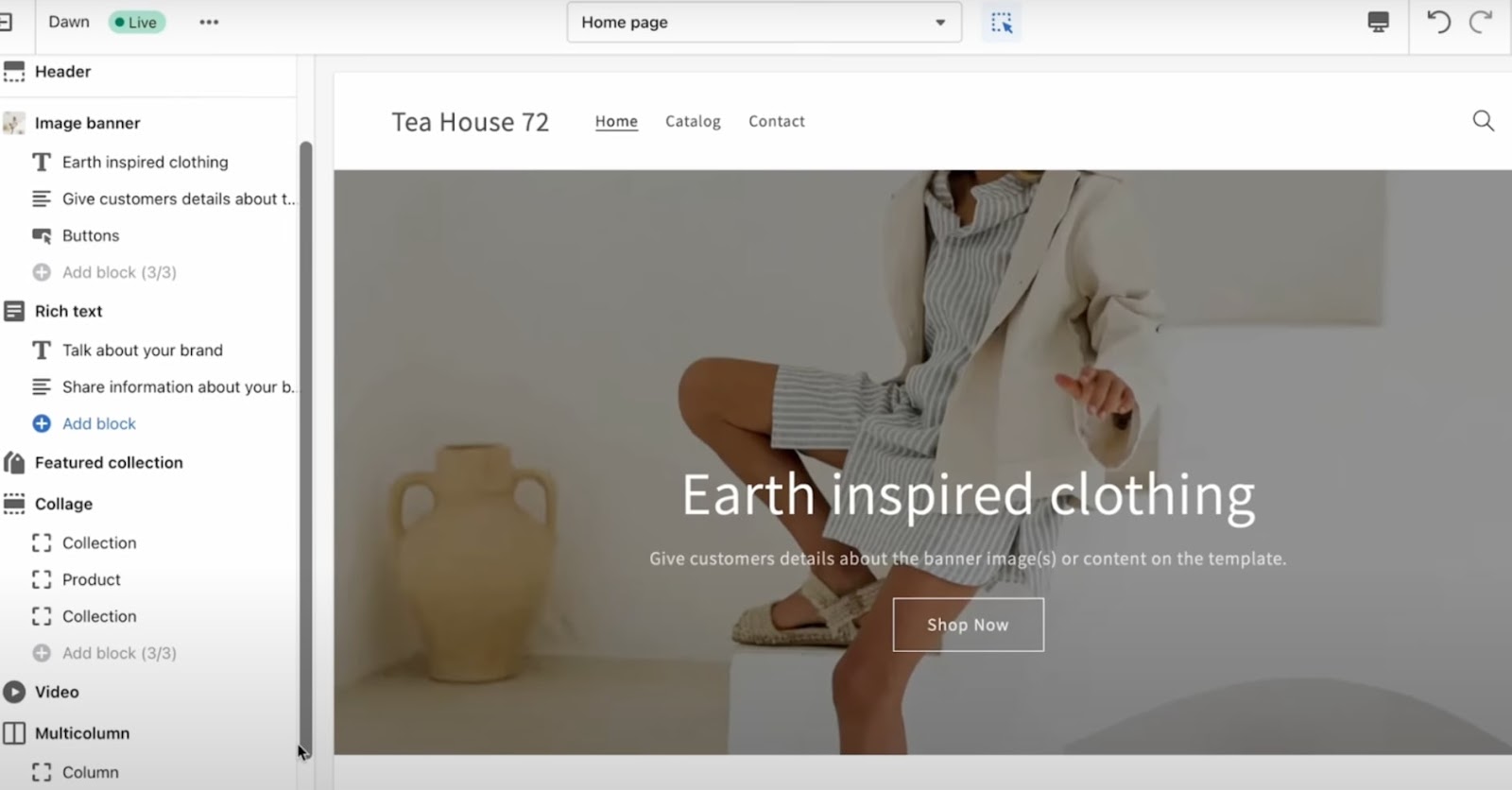
Compare them based on ease of use, customization capabilities, design options, customer support, etc.
It’s also important to select a web host—the service that enables you to publish your website on the internet once you’ve set it up. Many website builders also offer web hosting.
Further reading: Shopify vs. WordPress: Which Is Better for Ecommerce?
Decide Your Website Layout
It’s time to design your ecommerce store—the core of your online business. Website builders offer a wide range of both free and paid customizable themes you can install in a few clicks.
Test different themes to understand what works best for you. Choose one that allows you to perform heavy customizations.
Here’s an example:
If you sell personalized T-shirts, opt for a theme that lets you custom-code a feature allowing customers to add text or upload images for personalization. You can also custom-code a feature that lets them preview their customizations before purchasing.
Once you’ve picked a theme, start building the pages you need—for instance:
- Homepage
- Product pages
- About Us page
- FAQs page (optional)
- Policy pages
- Contact page
Important: Build your pages with search engine optimization (SEO) in mind to help your online store rank well in search engines. Read more in our Ecommerce SEO: A Simple Guide for Beginners and in Point 7 below.
Set Up a Payment Gateway
The whole point of an ecommerce business is to make online sales. So you’ll need to set up a payment gateway to accept payments from customers on your website.
A payment gateway is the front-end technology that facilitates secure and efficient processing of online customer transactions.
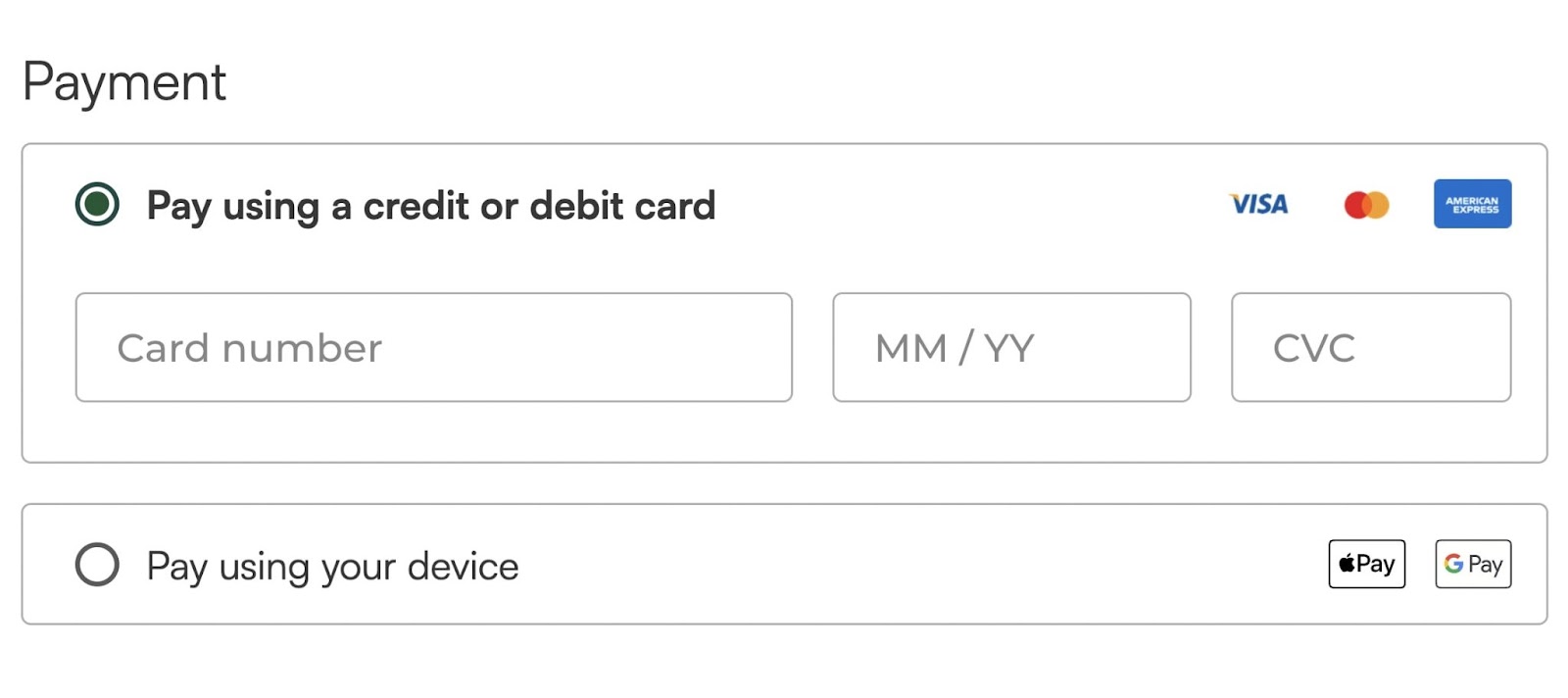
Luckily, many website builders offer native payment processing systems you can quickly set up on your online store. You can also use third-party ecommerce plugins like Stripe or Razorpay.
Before we move on to marketing tactics, let’s address a question that frequently pops up: How long does it take to start an ecommerce business and get an online store up and running?
There’s no single, straightforward answer here.
As you can see, your ecommerce setup will depend on different factors that may affect its timeline. Like your product-sourcing method and how long it takes to get the necessary licenses and permits. As well as available resources, website-building and other setup processes, and more.
7. Market Your Ecommerce Business
Once you’ve set up your ecommerce store, it’s time to get the word out there to attract your potential customers to your store.
But how?
By implementing digital marketing strategies like SEO, social media marketing, paid advertising, etc.
Let’s dive into some popular digital marketing strategies one by one.
SEO
Search engine optimization (SEO) refers to a set of processes aimed at naturally improving your website’s visibility in search engines.
Using relevant keywords in your content plays a big part here.
By optimizing your ecommerce website with the right keywords, you can attract potential customers who are using search engines to find products like yours.
Suppose one of your products is an automatic cat feeder. Using SEO, you can increase the chances of your website appearing in organic search results when someone types “automatic cat feeder” or related keywords.
So, how do you find the best keywords for your ecommerce store?
Run the Keyword Magic Tool. Enter a seed keyword (a broad term related to one of your products), select a country, and click “Search.”

Next, you’ll see a list of related keywords with details of “Intent” (the reason behind a searcher’s query), “Keyword Difficulty” or KD% (how difficult it is to rank in the top 10 search results for a given keyword), “Volume” for the keyword’s monthly search volume, etc.
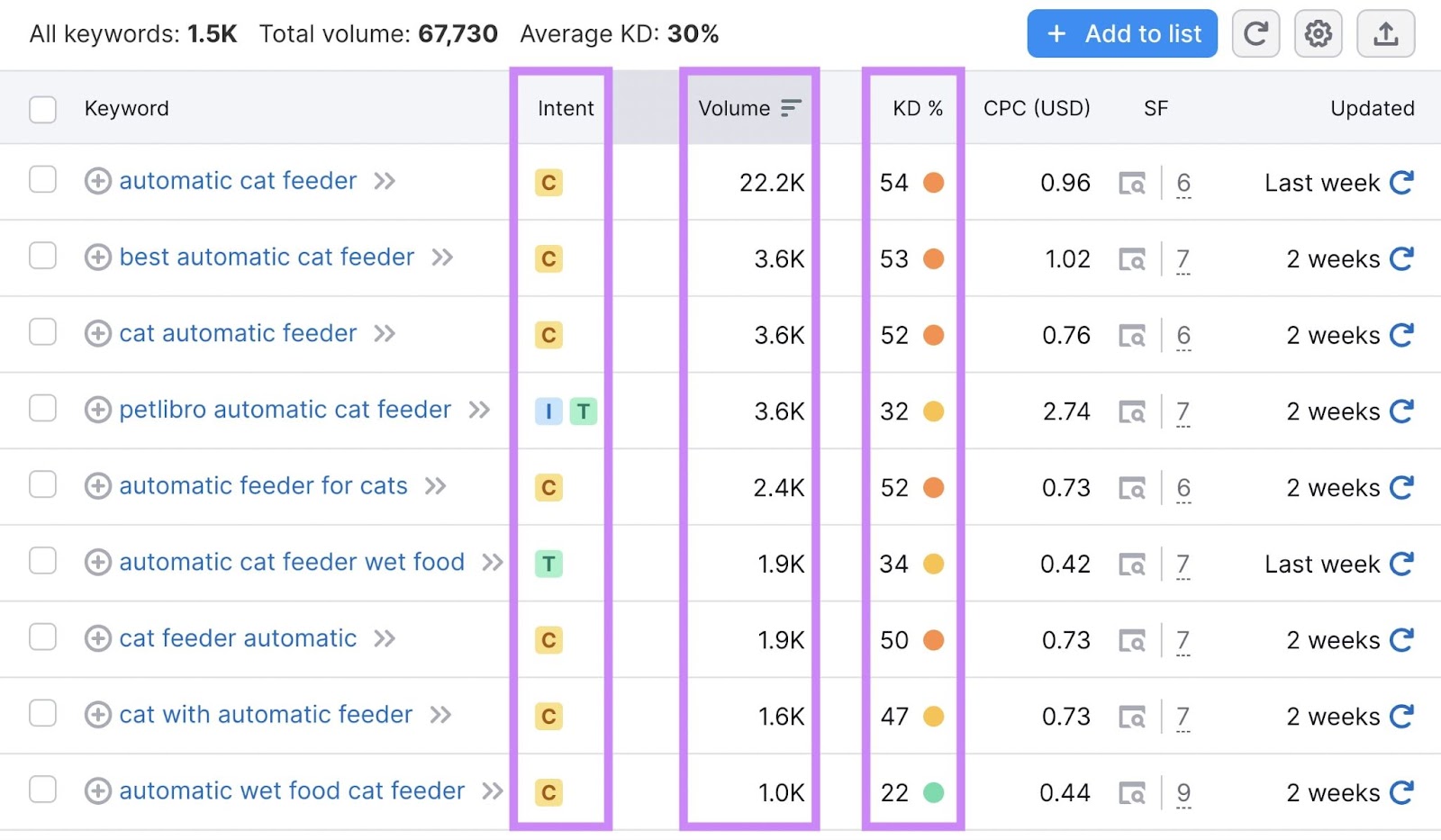
You can display your keyword results according to how closely they match your seed keyword. Choose from “Broad Match,” “Phrase Match,” and “Exact Match.”
Apply filters to further identify the best keywords. Like customizing the KD% to find search terms that are easy to rank for.
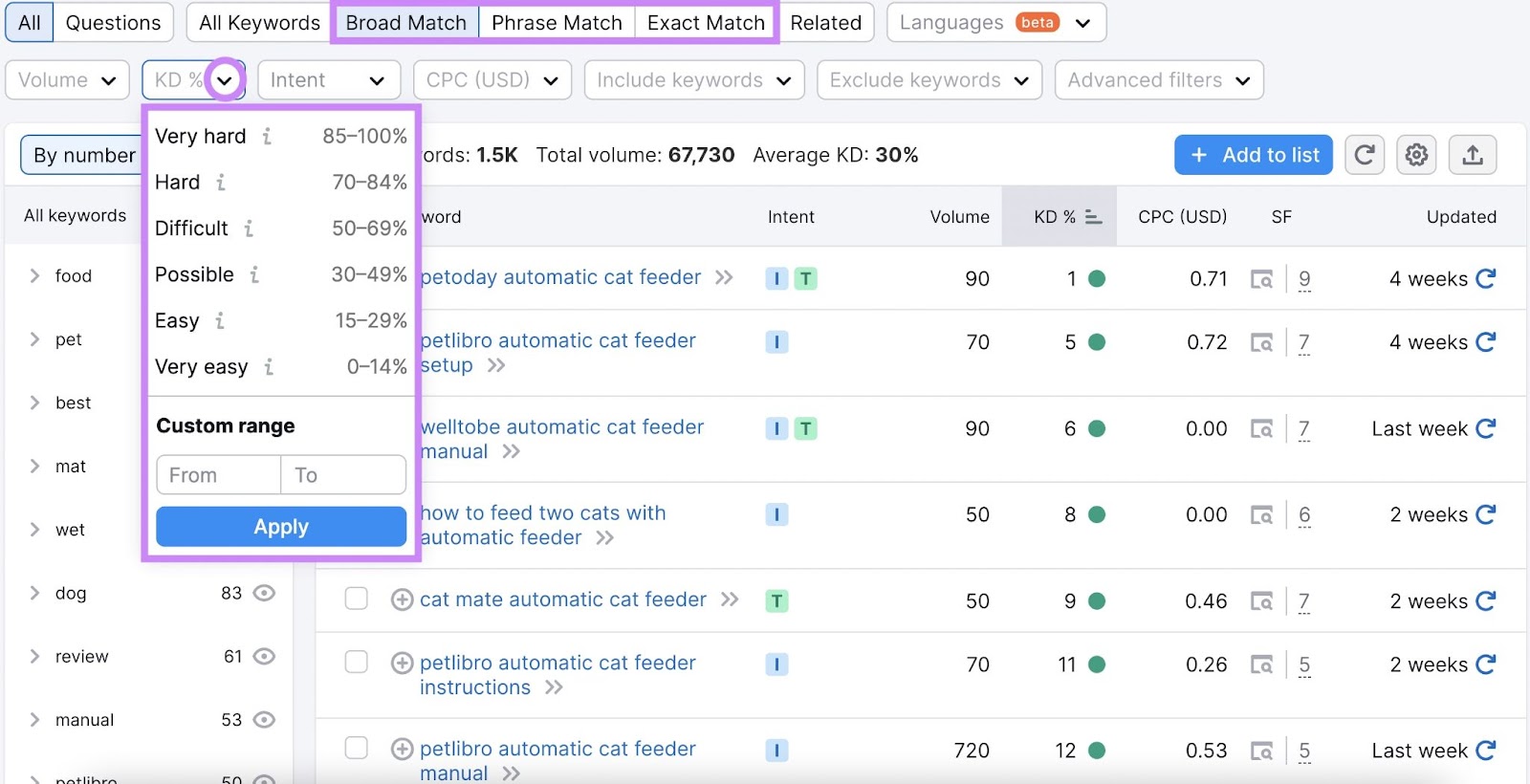
You can even choose from the topical groups and sub-groups in the left column to get the most relevant keywords. In our case, we selected the “food” group and “dry” sub-group.
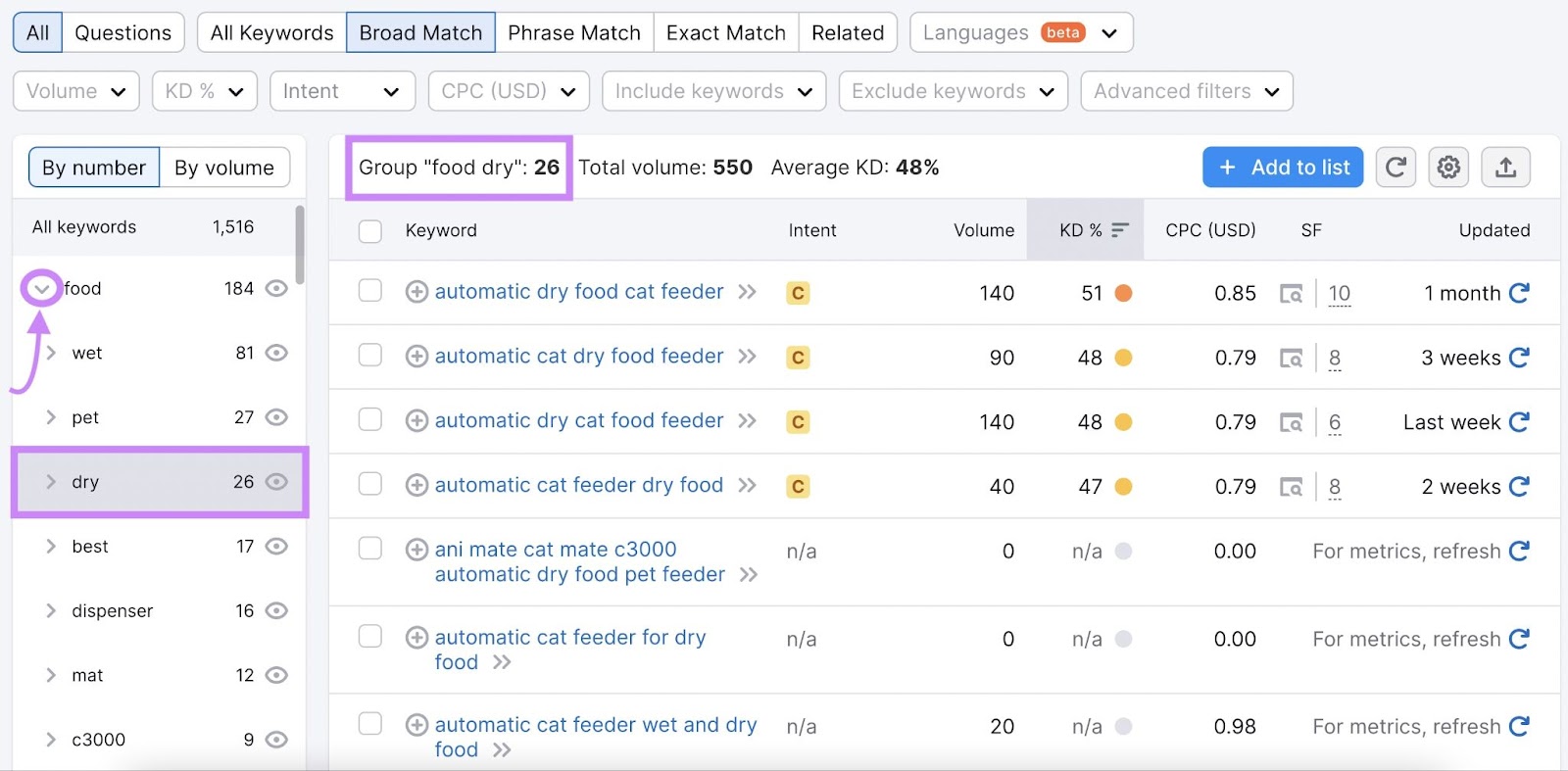
Use a combination of filters to narrow your keyword search.
When you find the right keywords for your business, it’s best to add them to a list. Here’s how:
First, tick the checkboxes next to the keywords you want to add to a list. Click “+ Add to keyword list” and create a new list or add them to an existing one.
Let’s name our list “Automatic Cat Feed Keywords Research.”
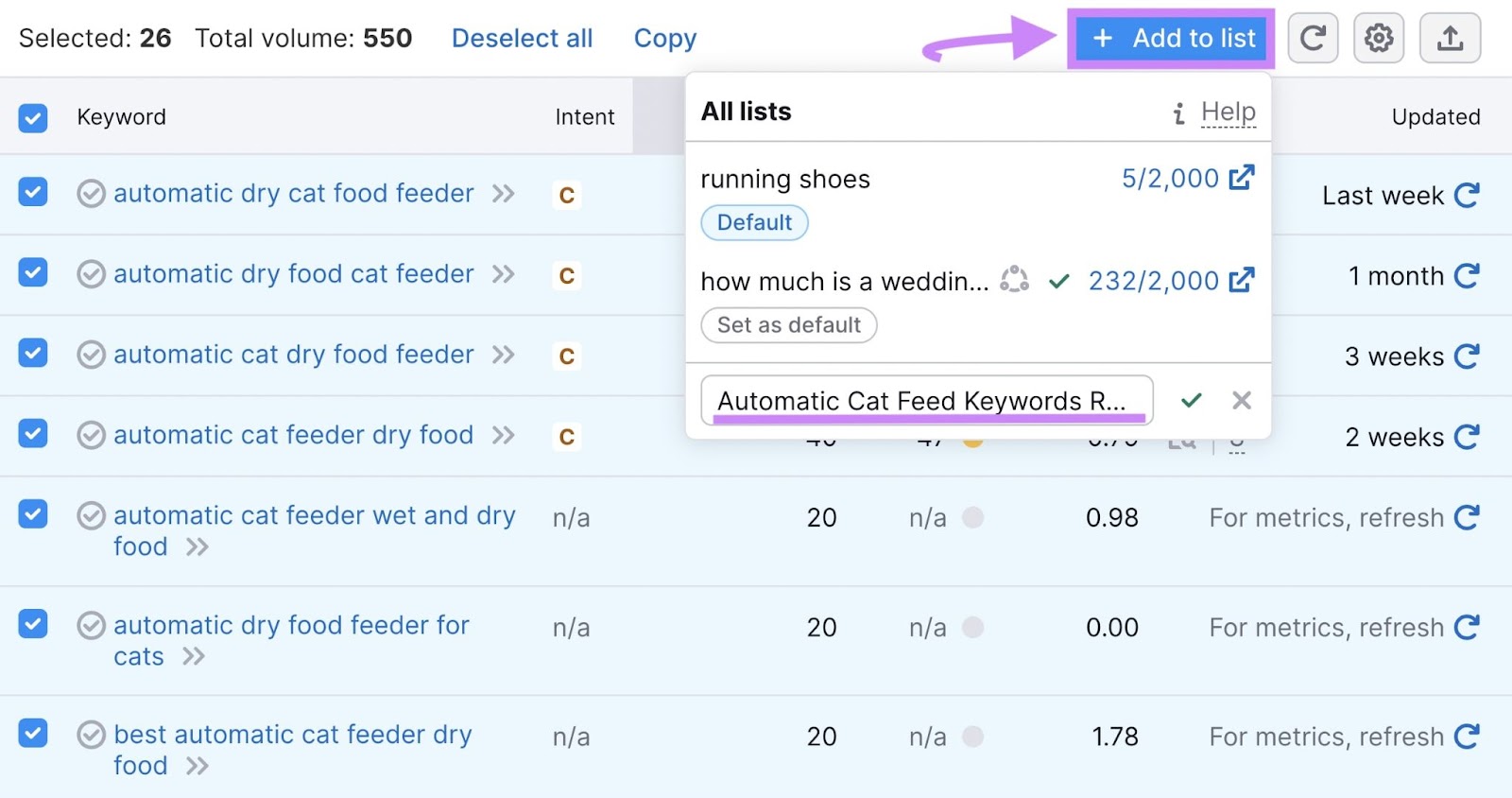
You can then export the keyword list from the Keyword Manager. Just click “Keyword Manager” from the left navigation bar.
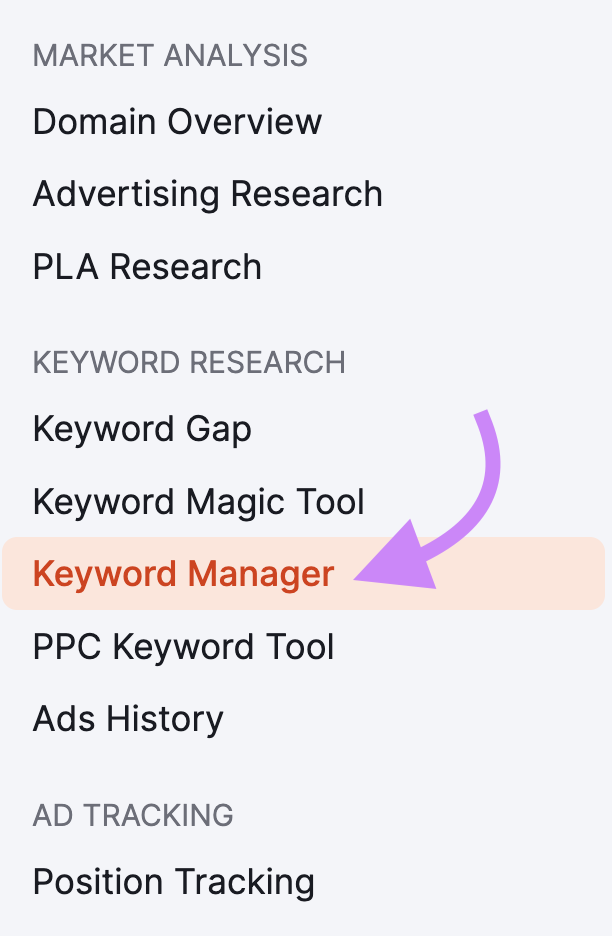
Select your keywords list under the “Keyword lists” section.
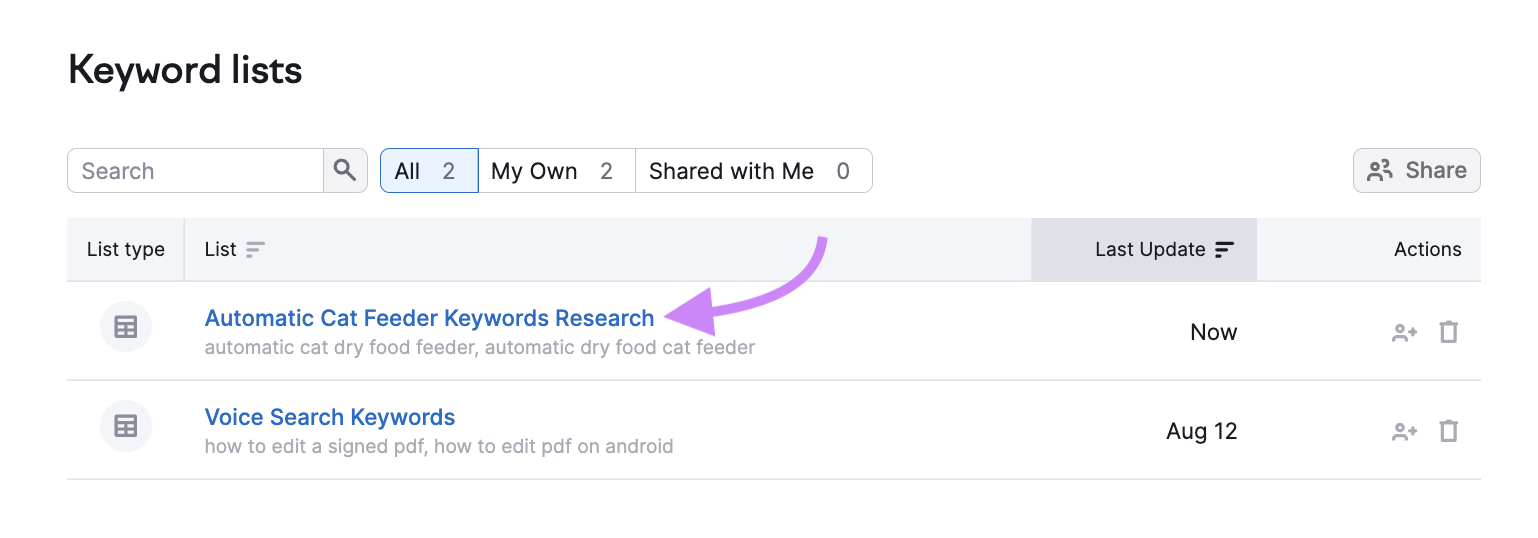
Next, you can either select the keywords to export by ticking the check boxes next to them or export them all. Click “Export.”
You can export this list in CSV, XLSX, or CSV Semicolon format.
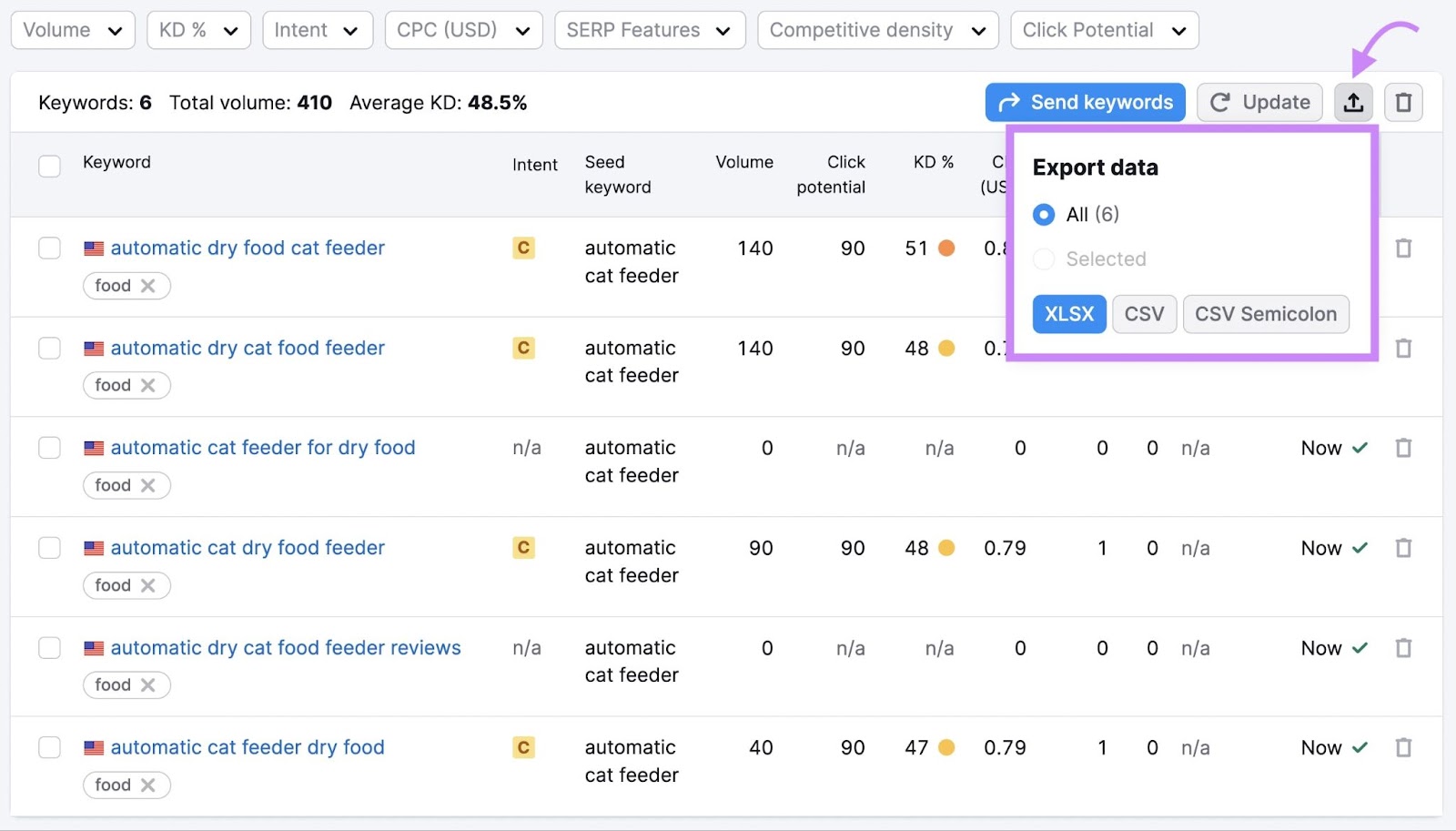
Paid Advertising
Paid advertising is a digital marketing strategy involving paid ads on channels like Facebook, Google, Instagram, and YouTube that put your content in front of your target audience. Increasing their chances of finding your ecommerce website on your preferred channels.
There are different paid ad models, of which a popular one we mentioned earlier is PPC. It works exactly as it sounds. You pay each time a user clicks on your ad targeting a specific keyword.
Here’s an example of a paid ecommerce ad on Google Search:
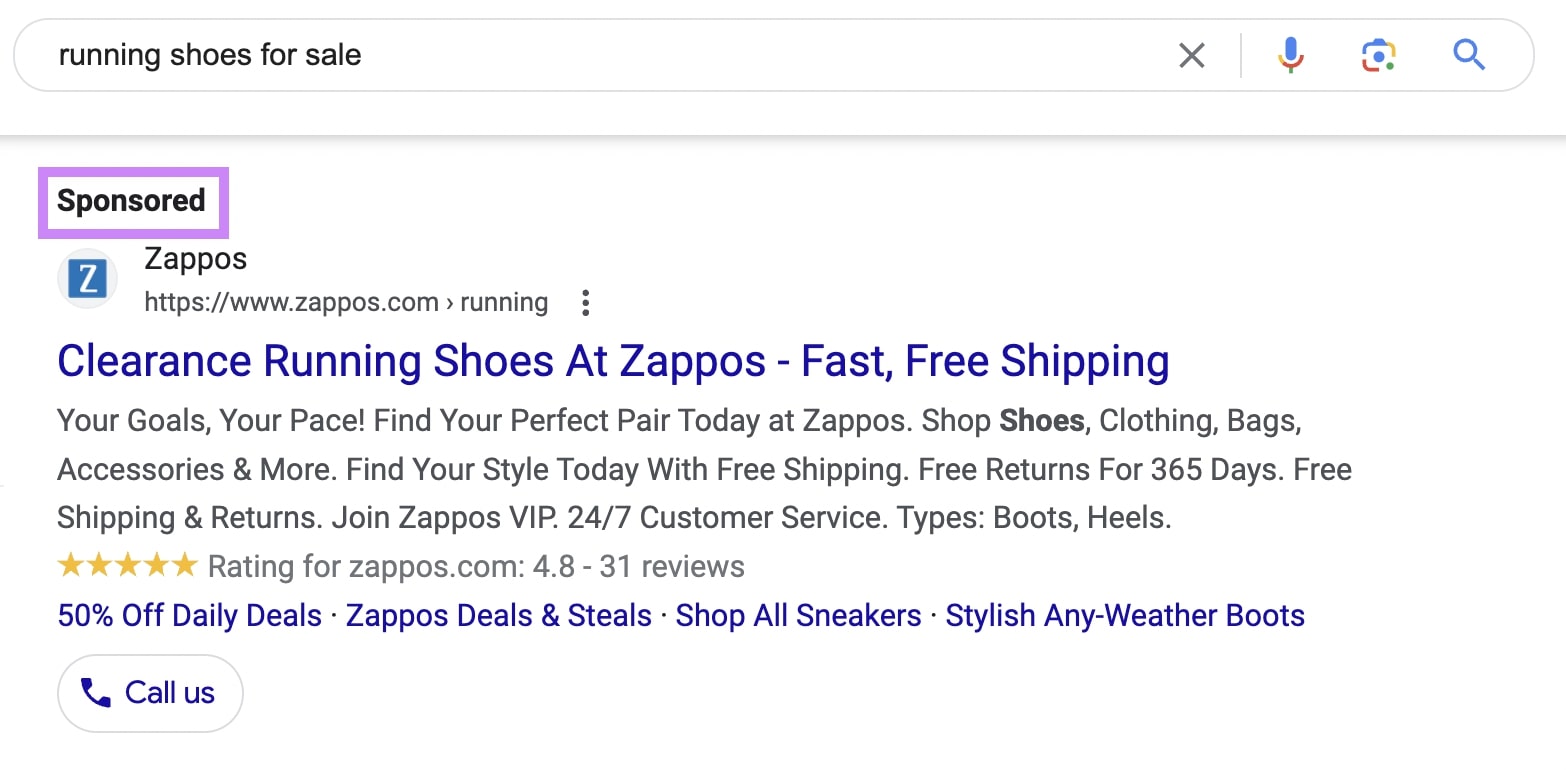
Important: If you’re not careful with your keyword research process, you could end up draining your budget. For example, if you target keywords with a very high CPC or ones that don’t align with the right search intent.
You can find the best keywords for your paid ads with Google’s Keyword Planner or Semrush’s Keyword Magic Tool.
If you want to analyze a specific keyword, use Keyword Overview. This tool also lets you tap into local data for your chosen keyword.
Below, we look at local metrics for “automatic cat feeder” in Los Angeles:
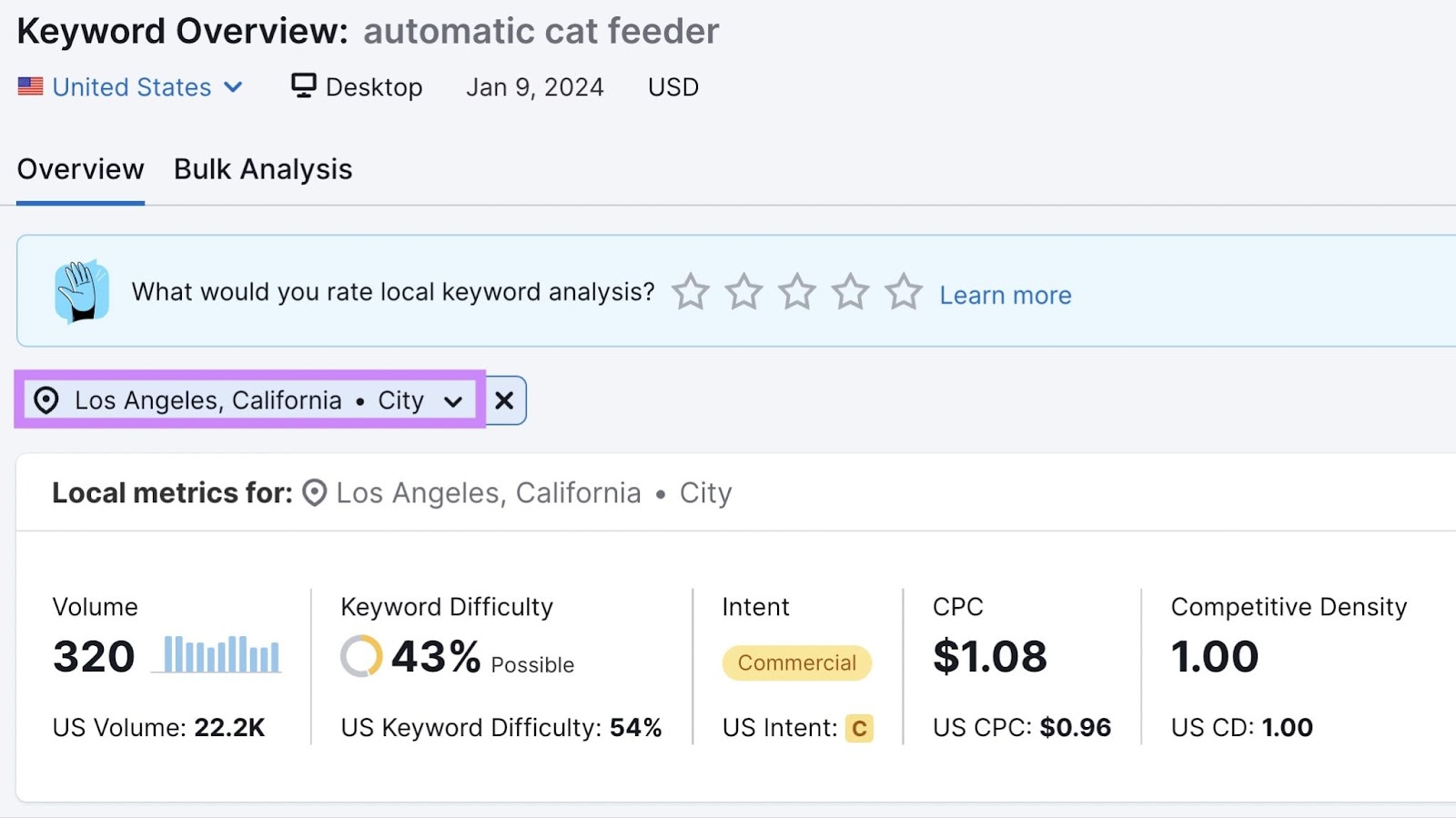
As you can see, the search volume for the keyword “automatic cat feeder” in Los Angeles is 320. CPC stands at $1.08.
Similarly, you can analyze other relevant keywords on a local level to better understand if it makes sense to target them in your market or niche.
Social Media Marketing
Social media marketing involves the use of social media platforms like Facebook, Google, LinkedIn, and TikTok to market your products and brand.
Being consistent with your social media marketing efforts can help you increase your brand’s visibility on these platforms, build stronger connections with your audience, and ultimately drive traffic to your ecommerce website. Leading to more sales.
Social media marketing involves, among other things, publishing high-quality social media content that resonates with your audience. Plus:
- Interacting with followers on social media
- Using relevant hashtags to increase the discoverability of your content
- Creating and nurturing a community around your brand
And more…
Doing so across multiple platforms can be challenging. Semrush’s Social Media toolkit makes things easier.
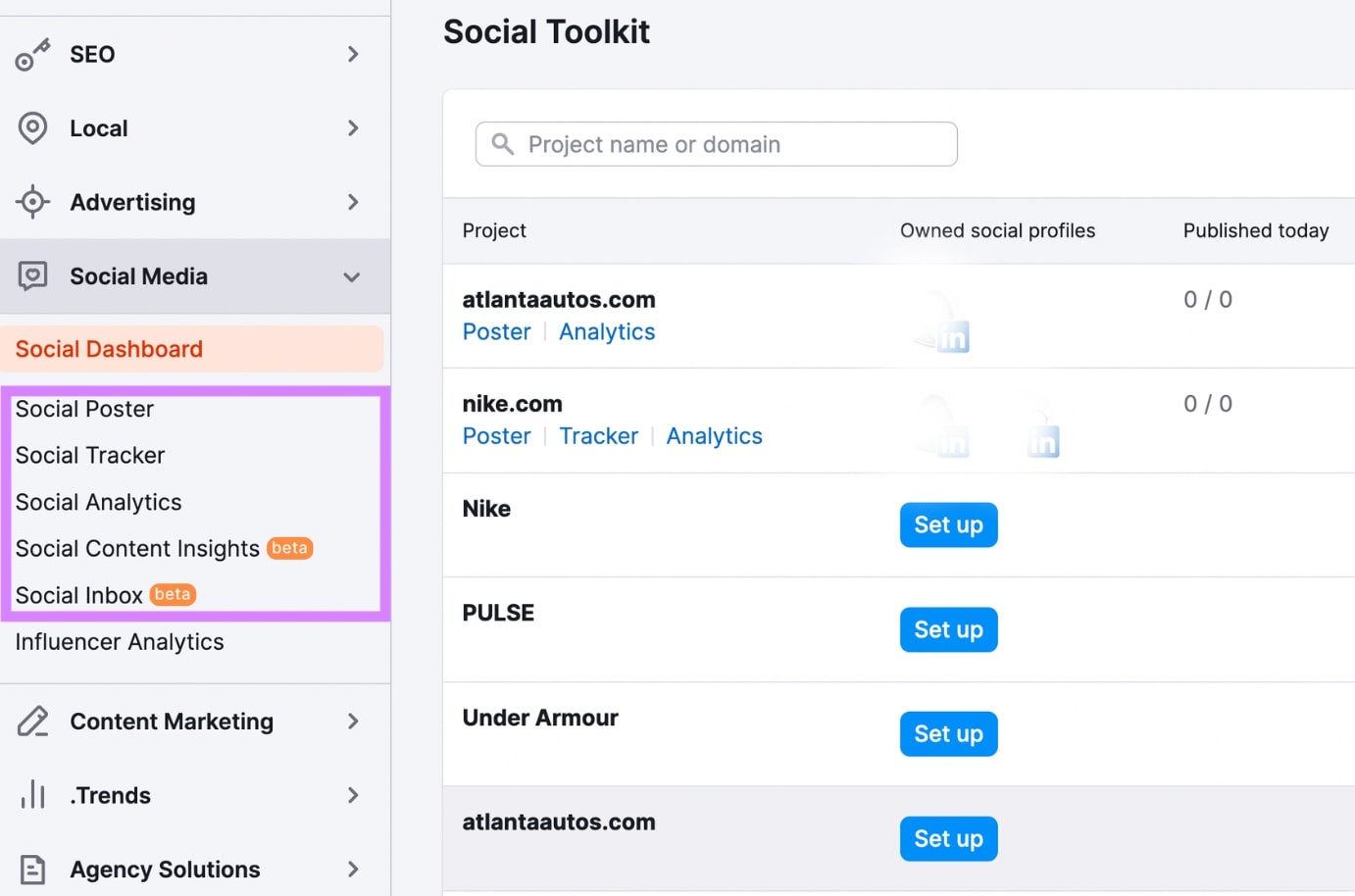
Here are the Semrush tools you’ll need for your ecommerce business:
- Social Poster: Draft, schedule, and post content across different social media platforms—including Instagram, Facebook, X (formerly Twitter), and Pinterest.
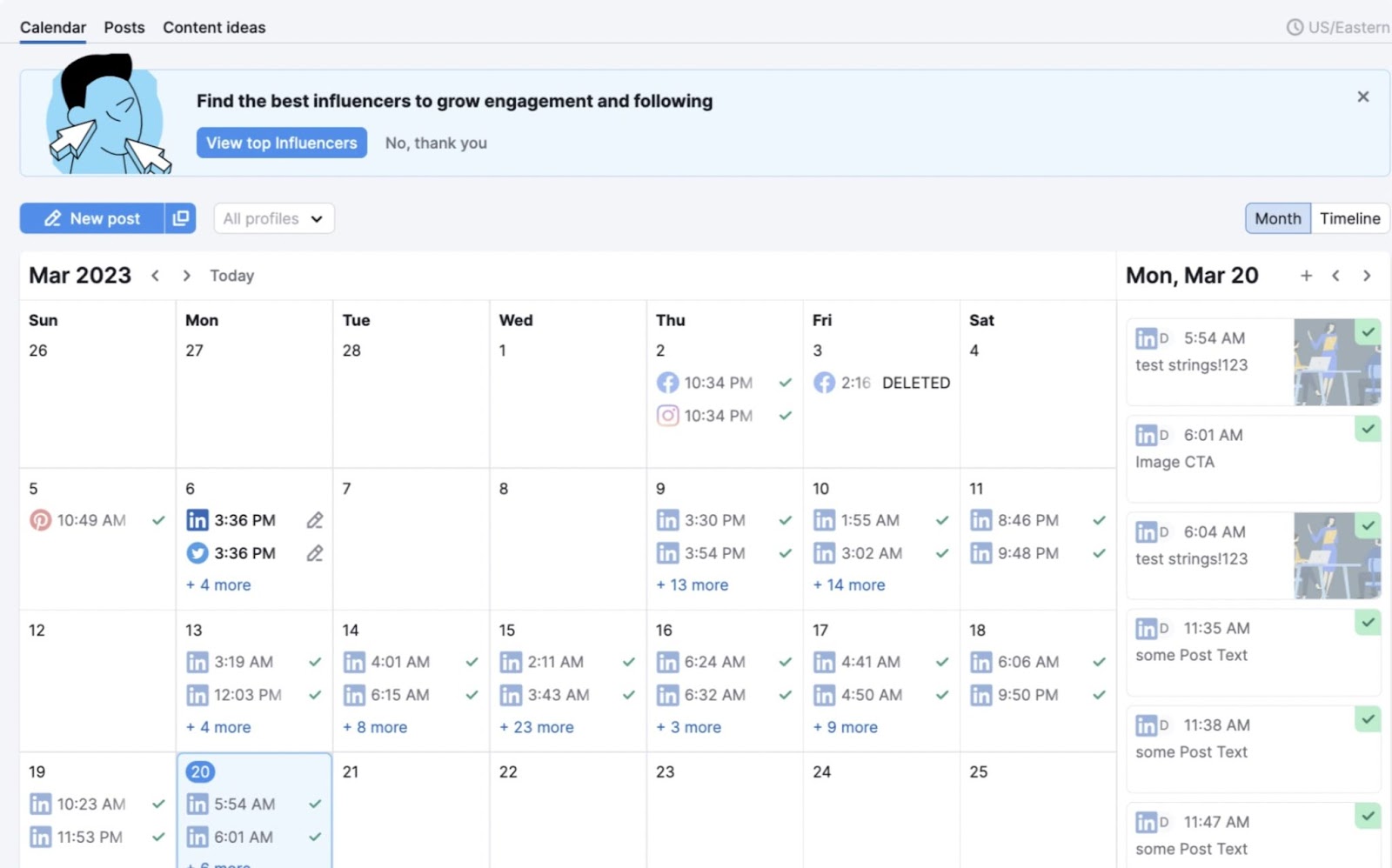
- Social Tracker: Monitor your competitors’ social media accounts to compare growth and engagement.
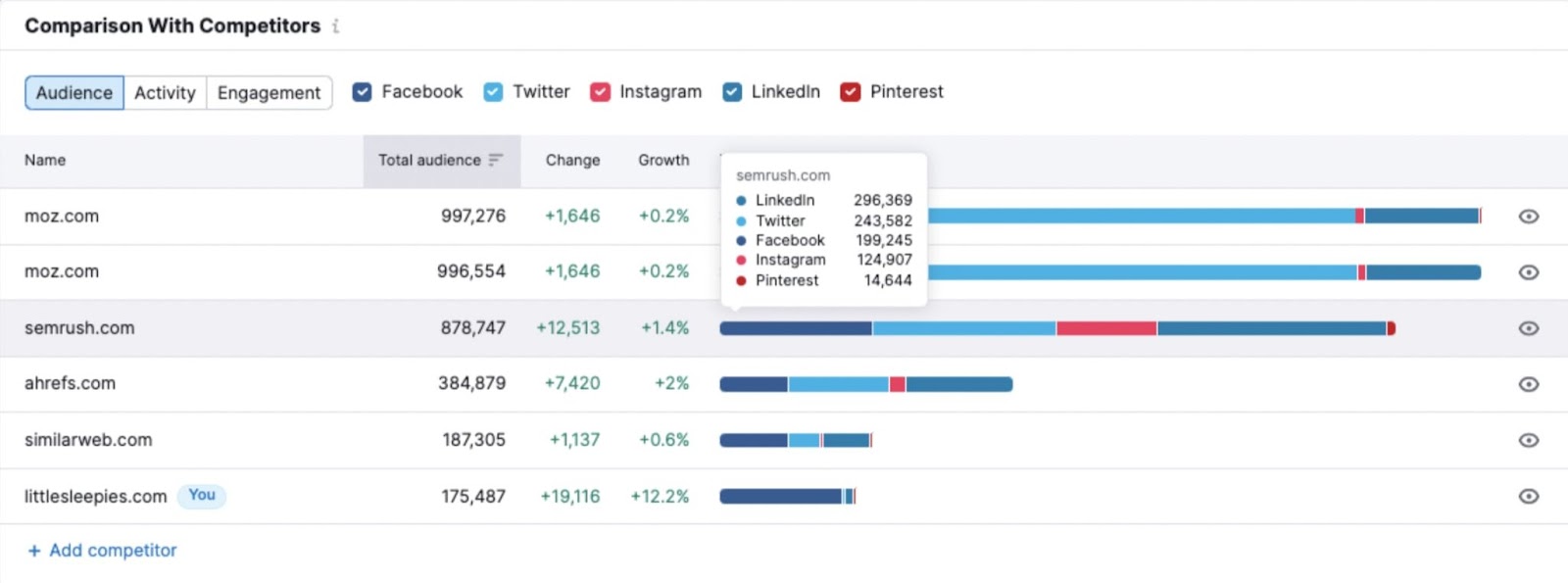
- Social Analytics: Track your own social media marketing efforts via follower, reach, and engagement metrics.
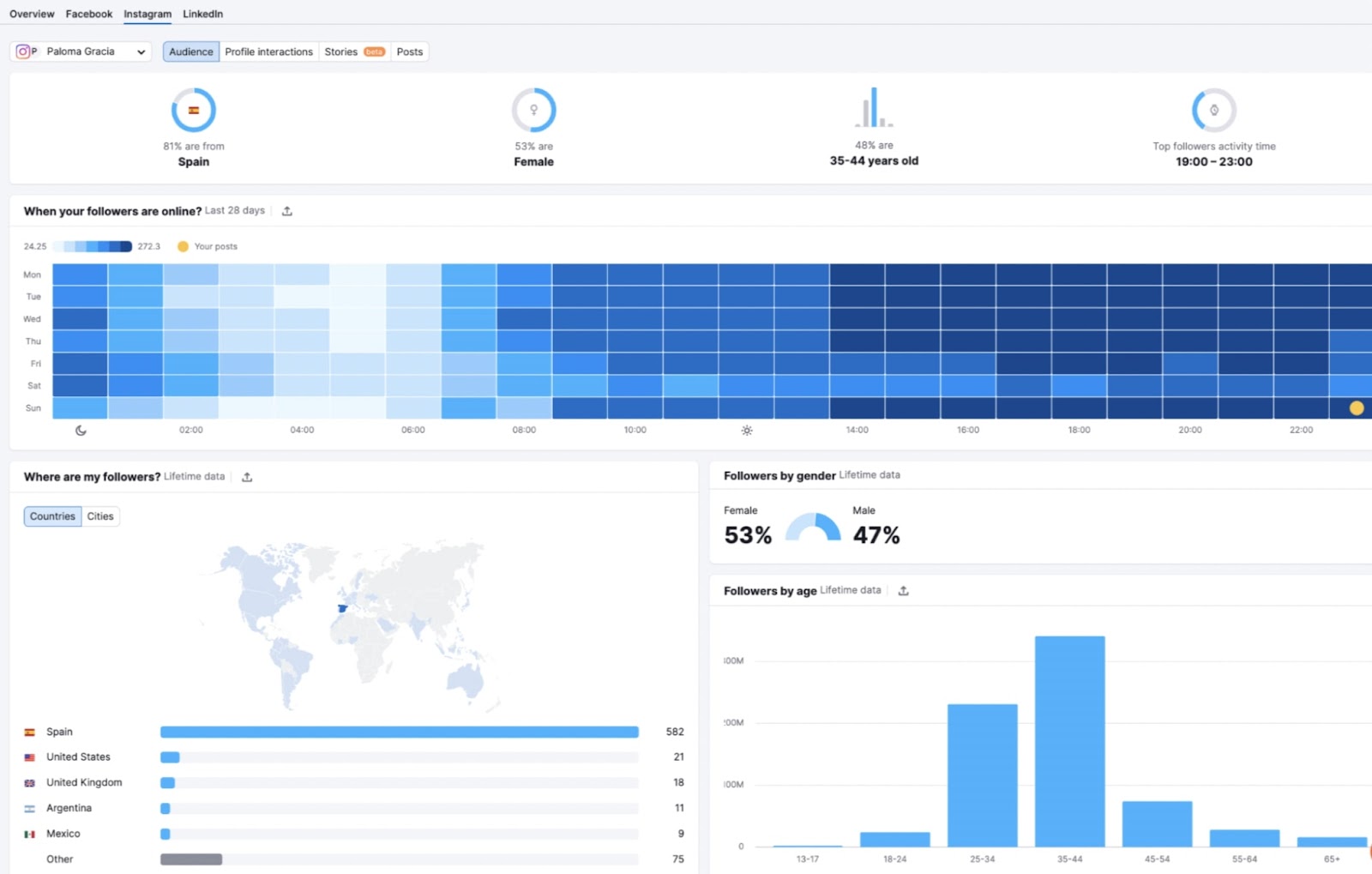
- Social Inbox: View and respond to incoming messages across different platforms.
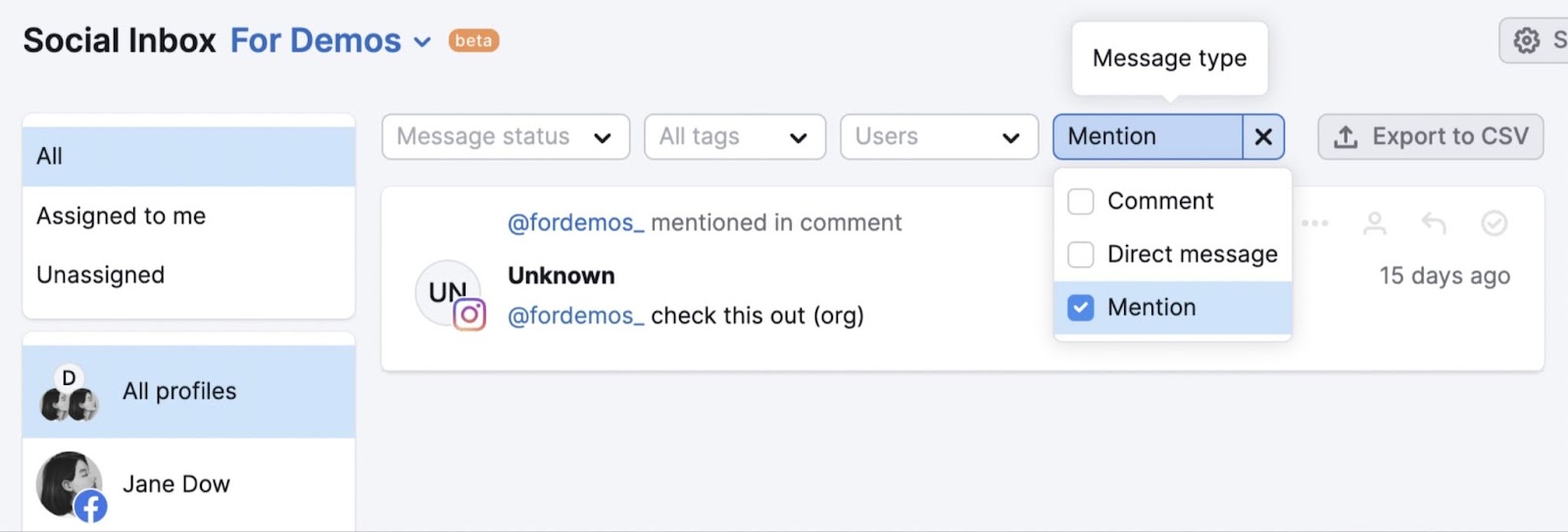
Further reading: How to Create an Ecommerce Marketing Strategy
4 Tips to Succeed in Ecommerce
Here are a few key ecommerce success strategies to follow once you’ve set up your business:
Optimize Your Ecommerce Website for Conversion
Optimizing your ecommerce store can help you convert more of your visitors into paying customers. Leading to more sales and revenue.
Otherwise, even if you attract a lot of visitors to your website, you’ll struggle to turn them into actual buyers.
Here are a few tips to optimize your ecommerce store for conversions:
- Make your website mobile-friendly
- Increase your page speed
- Improve your website navigation
- Offer multiple payment options
Semrush’s Site Audit tool lets you identify over 140 issues that may be affecting your website. Like poor page speed.
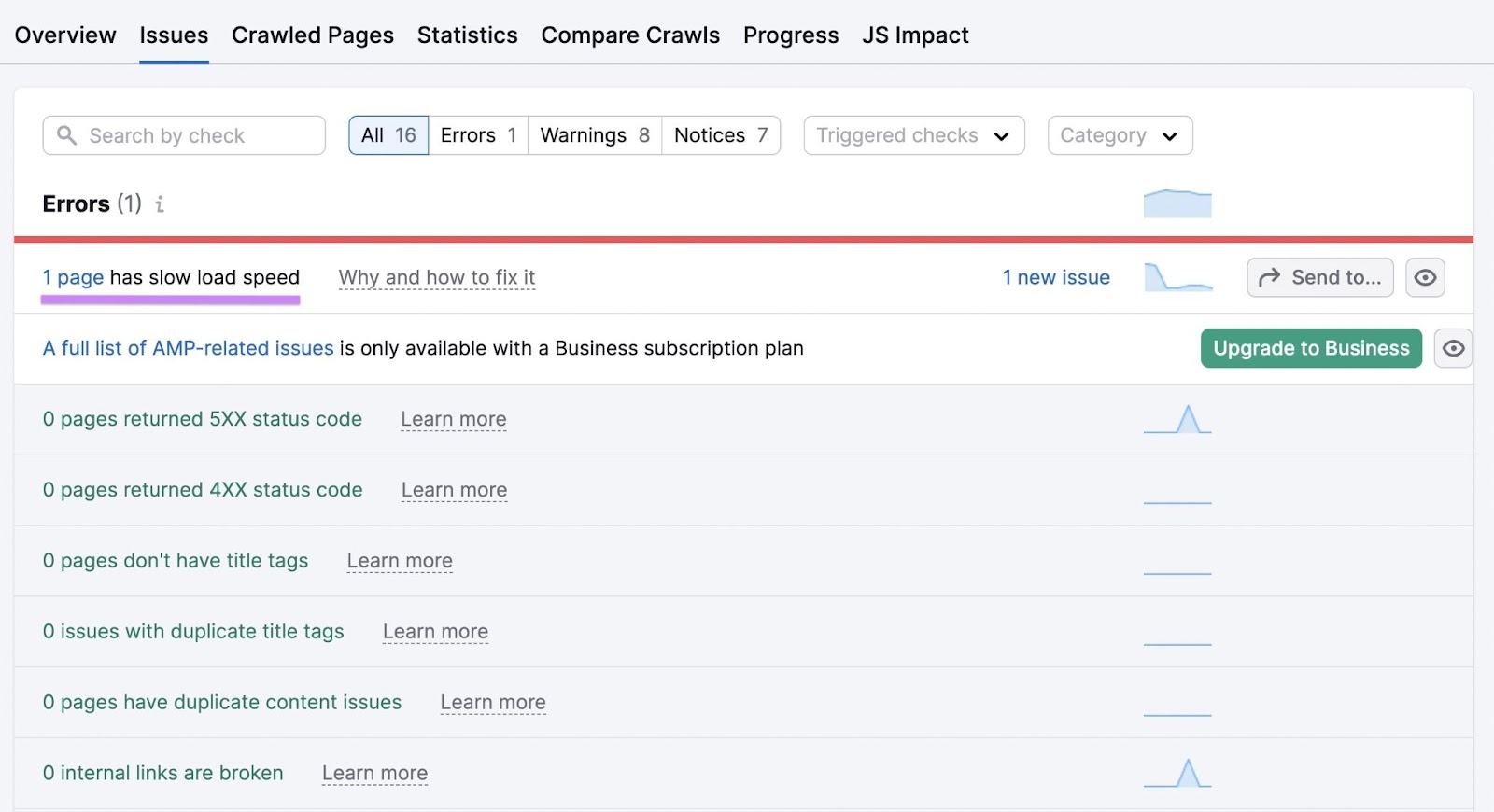
Select “+ Create project” to create a new project.
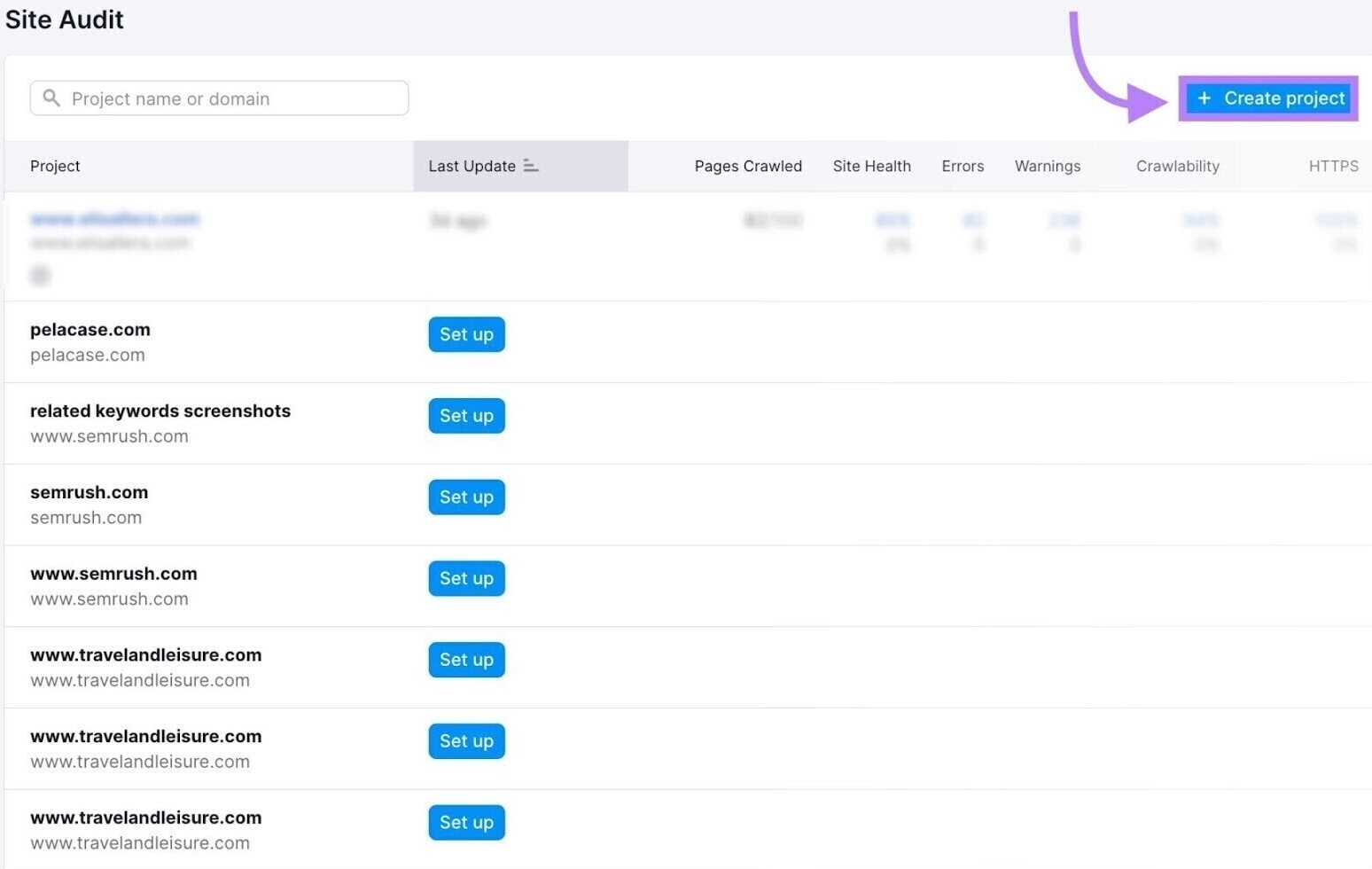
Enter your domain and project name (the latter is optional). Then hit the “Create project” button.
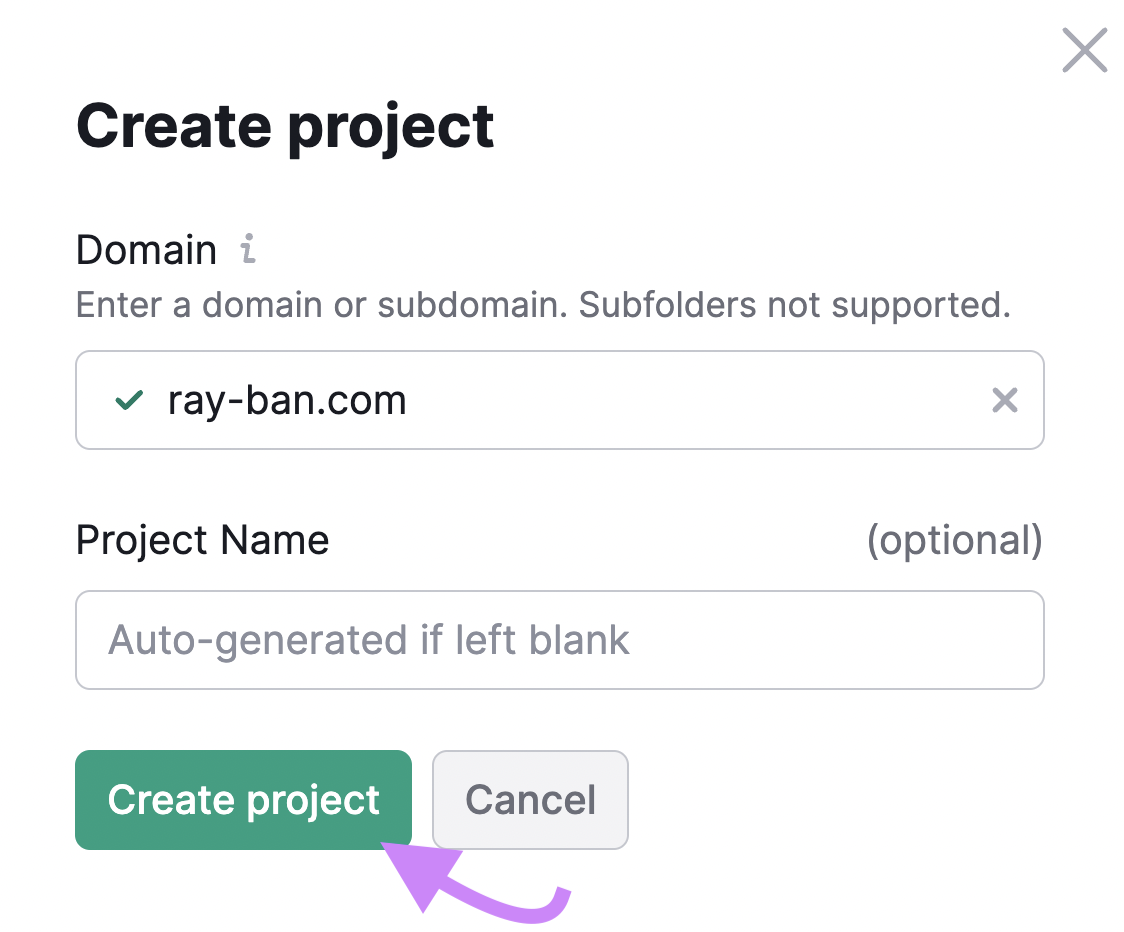
Follow the on-screen instructions to configure your project. Once done, click “Start Site Audit.”
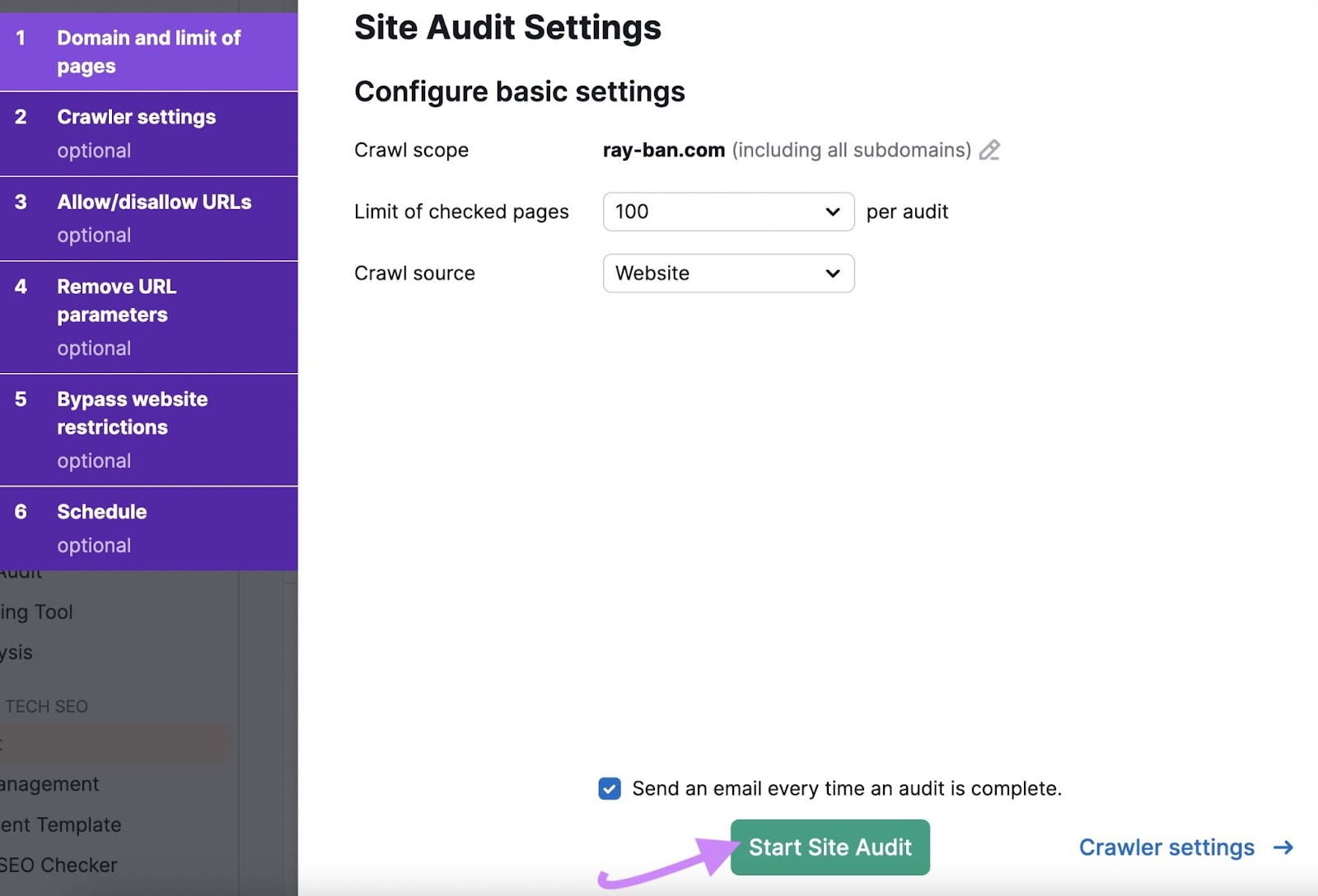
Next, the tool will provide valuable recommendations and insights to optimize your website for higher conversion rates.
Implement a Customer Loyalty Program
A customer loyalty program lets you reward customers to encourage ongoing business, foster long-term relationships, and grow brand loyalty and advocacy.
The aim is to provide buyers with incentives and benefits that make their interactions with your brand more worthwhile. You’ll likely increase your customer retention rate as a result—meaning you drive more sales and revenue from repeat purchases.
Starbucks Rewards is a successful example of a customer loyalty program you could adapt for your ecommerce store.
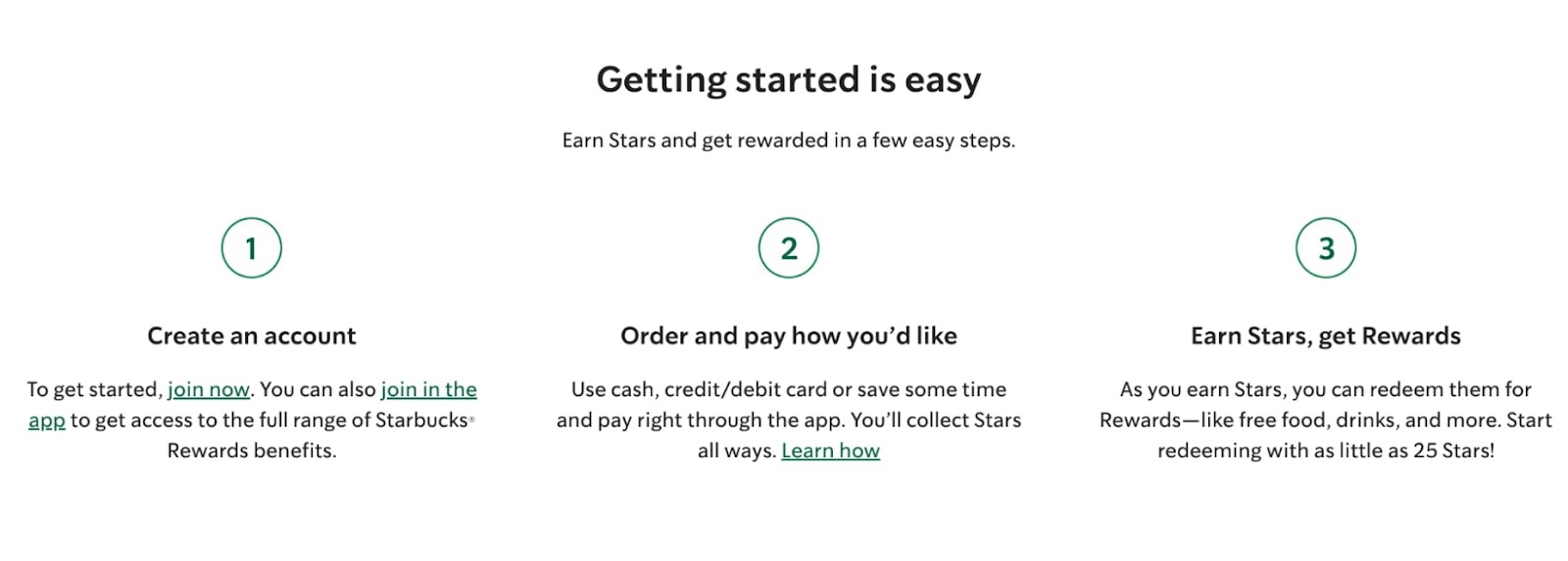
Every time you purchase at Starbucks, you earn “Stars” which accumulate in your Starbucks Rewards account. You can redeem these stars for rewards like free drinks, food, and more.
Run an Influencer Marketing Campaign
Working with influencers is a great digital marketing strategy to increase brand awareness and drive more sales. You get to tap into their follower base and the trust they have built with their audience.
Take Converse. The footwear brand collaborated with four top TikTok creators (with a combined 12 million followers) to promote the launch of its “Creative All-Star Series” in London.
A video from Jake Sweet, one of the influencers, drove more than 37K likes and 120+ shares alone.
To drive real ecommerce success, look for influencers with:
- A high engagement rate
- Followers who share similarities with your target audience
- Values and interests that align with your brand
- Time to collaborate with your brand personally
Use Semrush’s Influencer Analytics to find the best influencers for your business needs. The tool lets you tap into a gigantic database of 27M+ influencers and enables several filters for narrowing down your search.
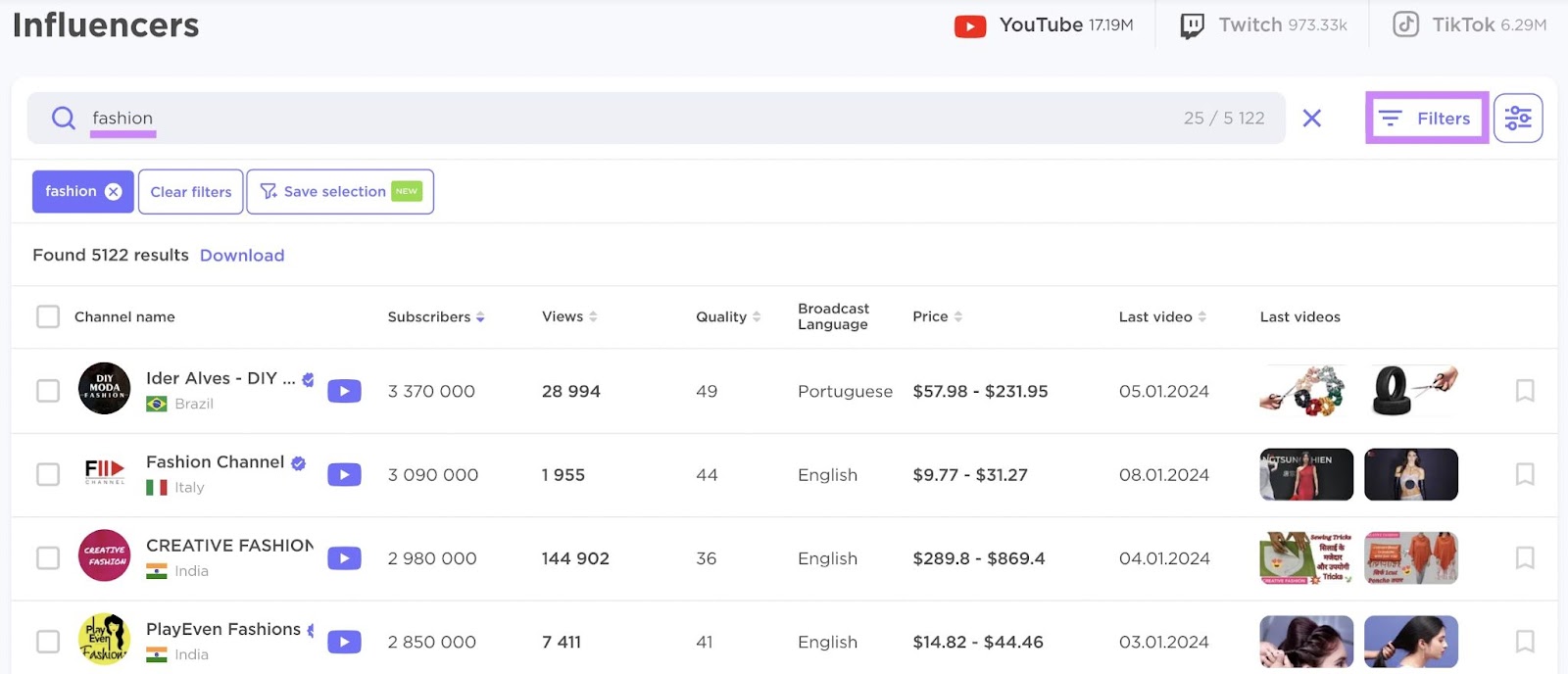
Establish Your Presence on Ecommerce Marketplaces
Having your storefront on ecommerce marketplaces means you can take advantage of their incredible reach and reputation. Potentially resulting in higher sales and revenue.
Ecommerce marketplaces like Amazon and Walmart drive billions of people to their websites each month. Customers like to purchase here because of the trust the marketplaces built over the years, their customer-centric approach, and vast product selections.
True Classic, an ecommerce T-shirt brand for men, has both Amazon and Walmart storefronts. Here’s one of them:
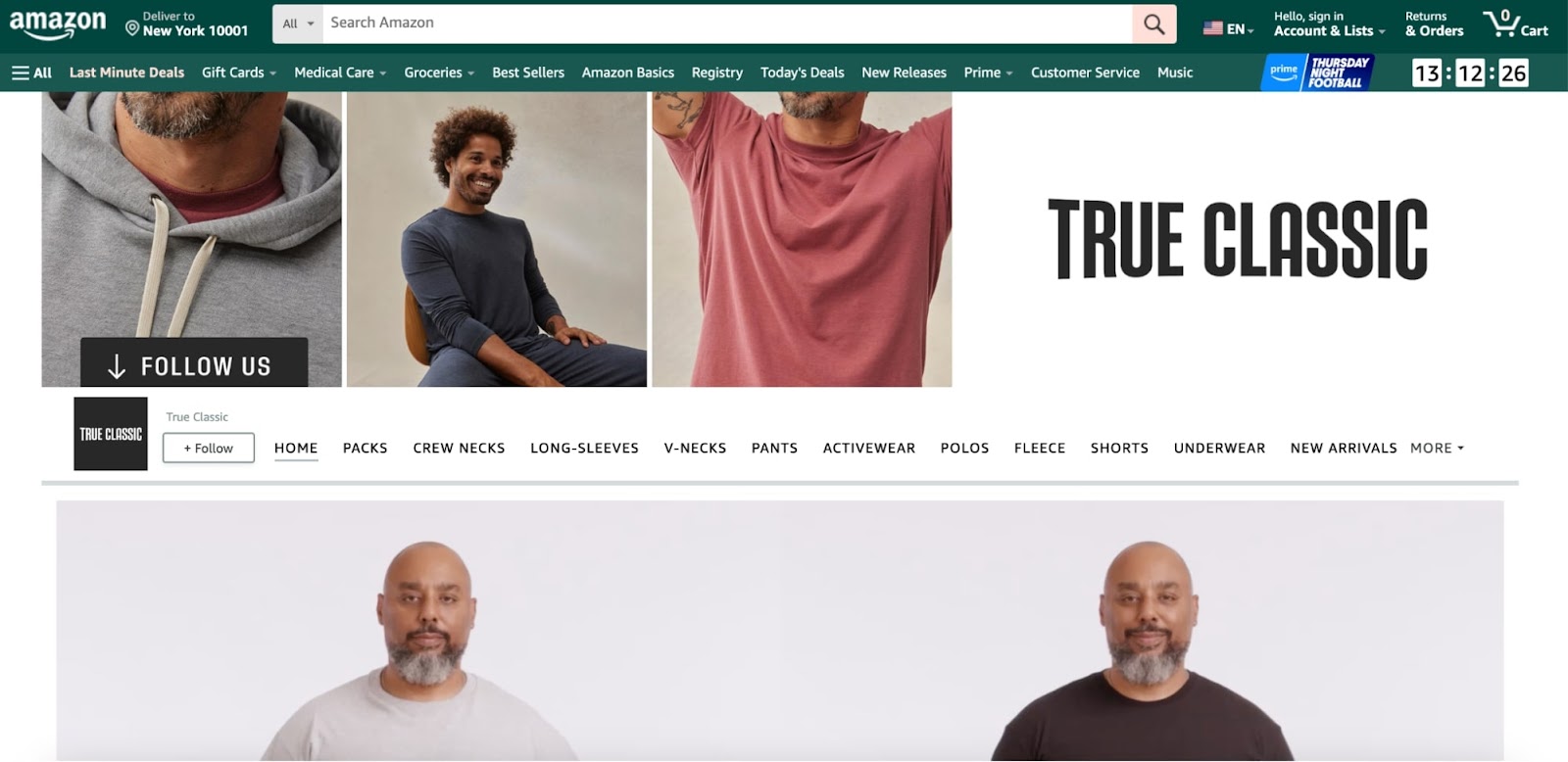
Further reading: 8 Tactics to Add to Your Ecommerce Growth Strategy
Gear Your Ecommerce Business Up for Healthy Growth
Launching your ecommerce business is just the start of your journey.
Make it a practice to continuously test different digital marketing strategies to better understand what works best for your business—and what doesn’t. Also, keep an eye on the latest ecommerce trends and competitors’ marketing strategies to get and stay ahead.
Semrush’s all-in-one digital marketing platform has more than 50 tools to support your various ecommerce marketing efforts. From SEO to paid advertising, social media, and influencer marketing.
Sign up and start driving your ecommerce business forward.
